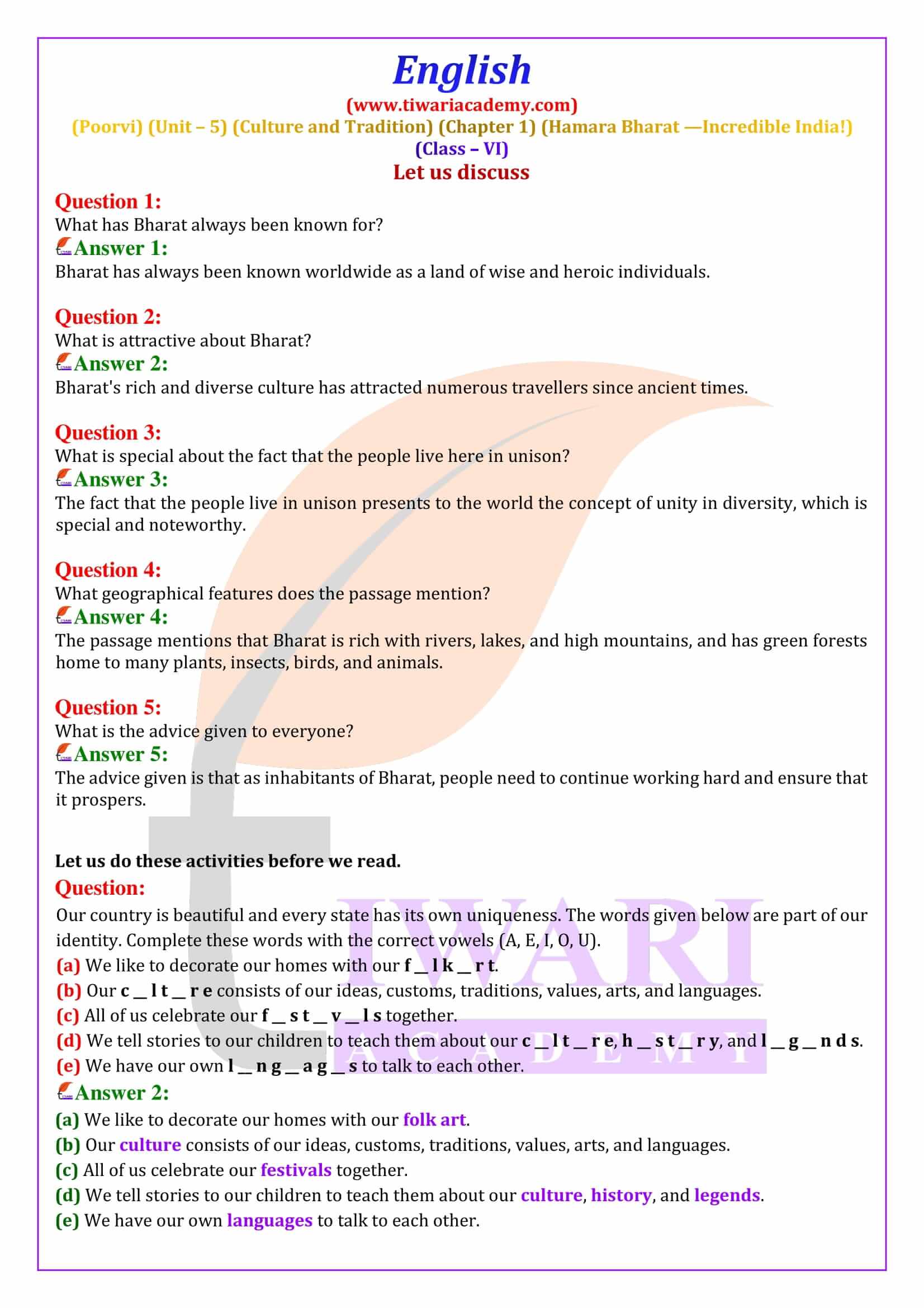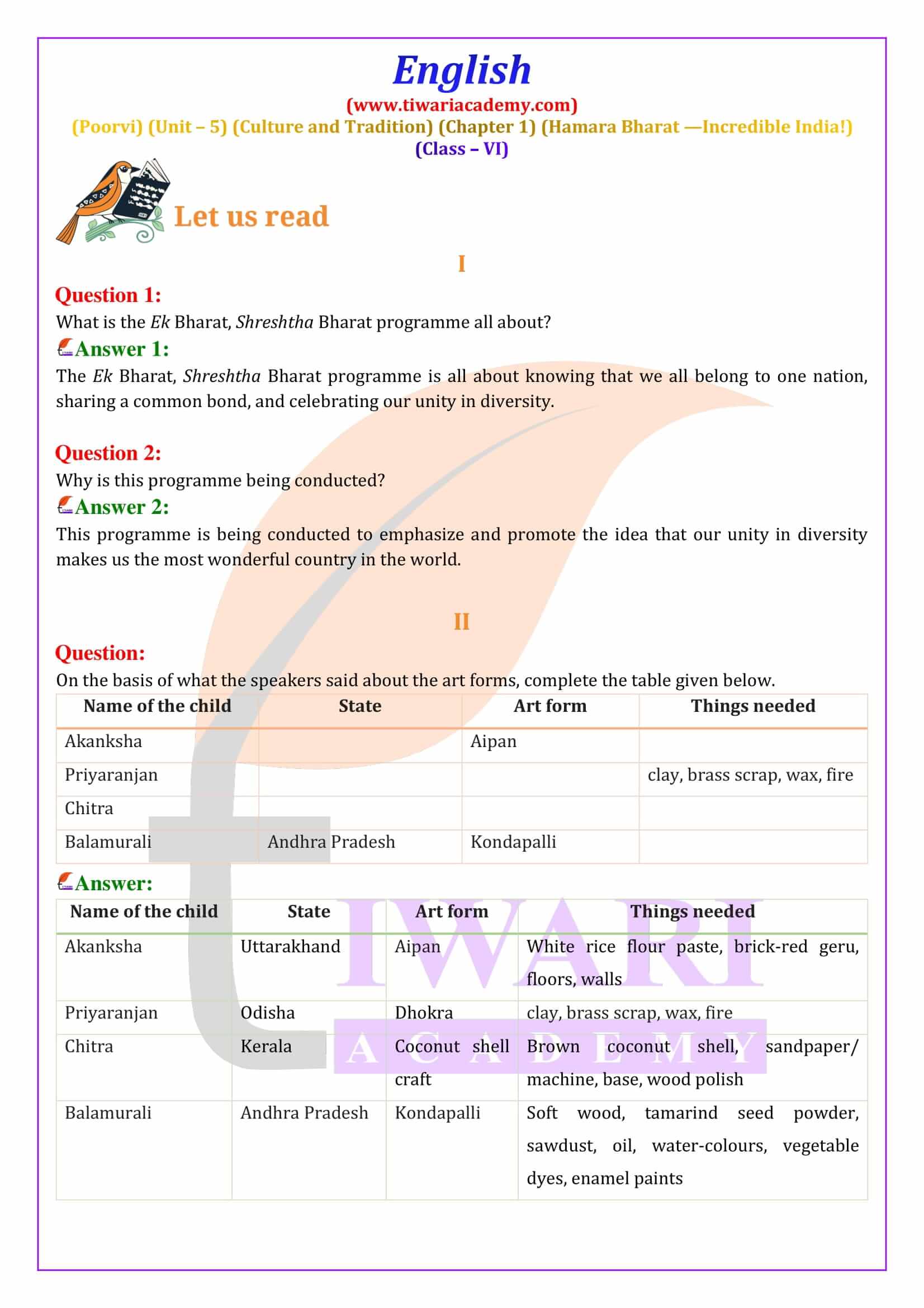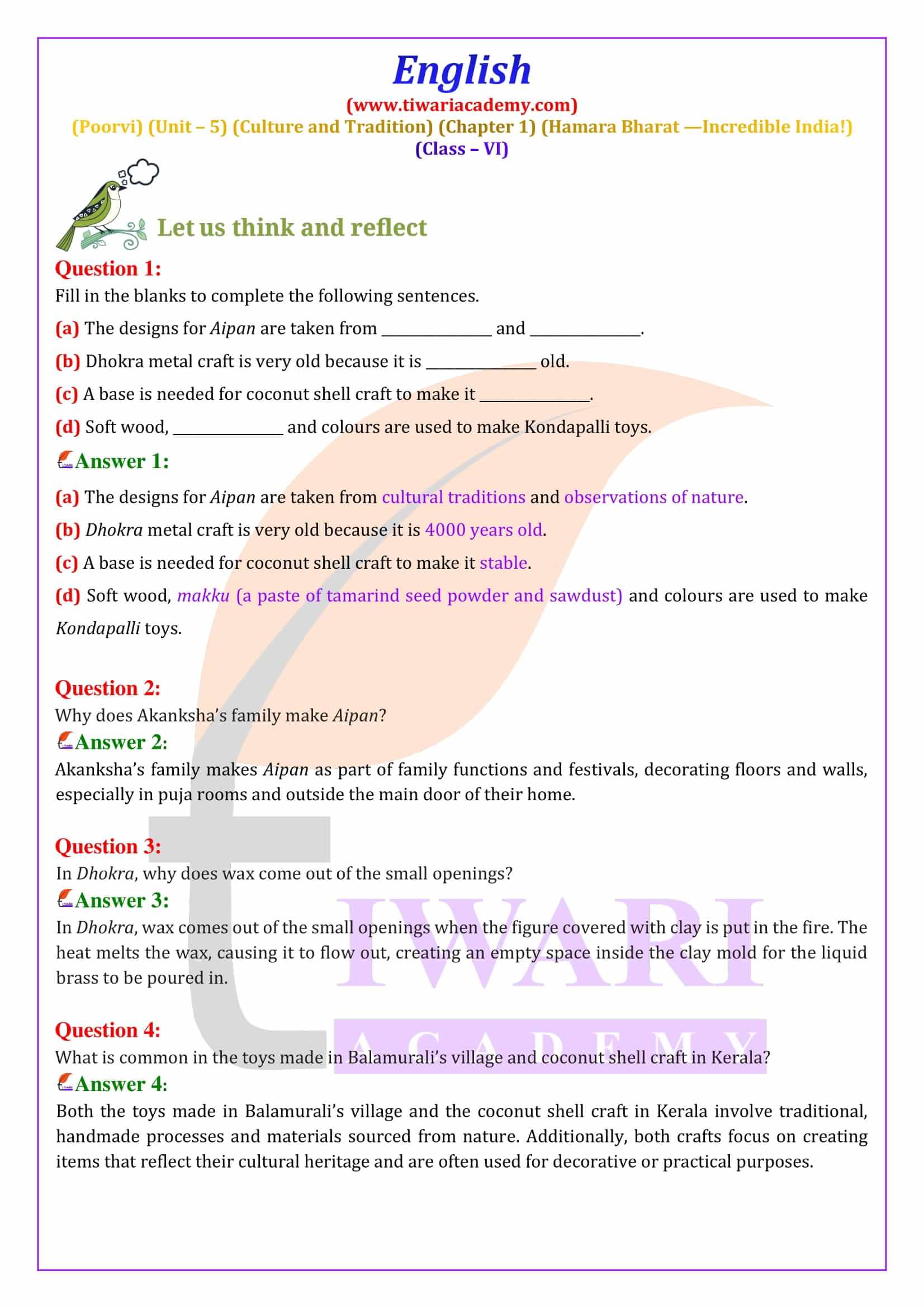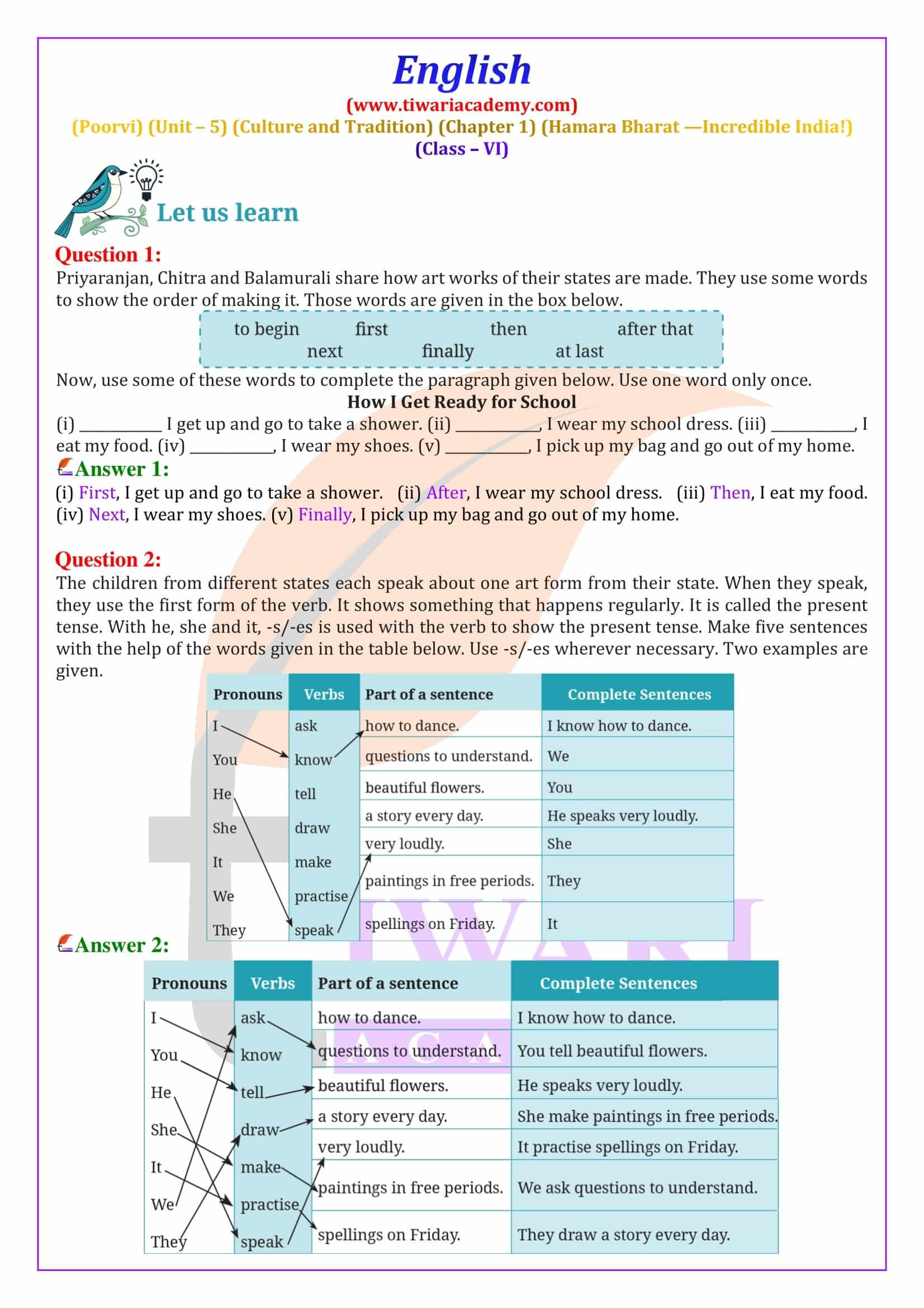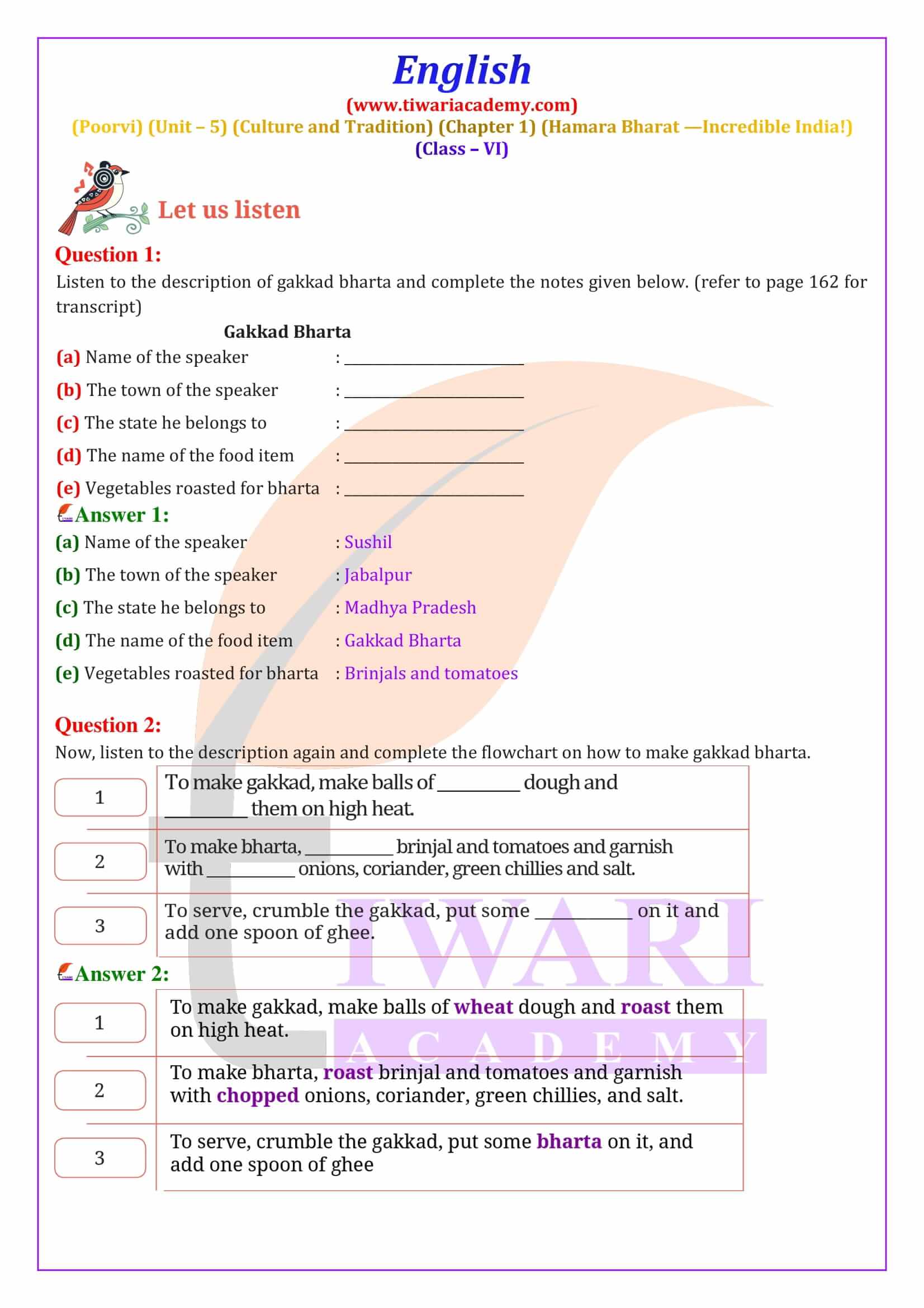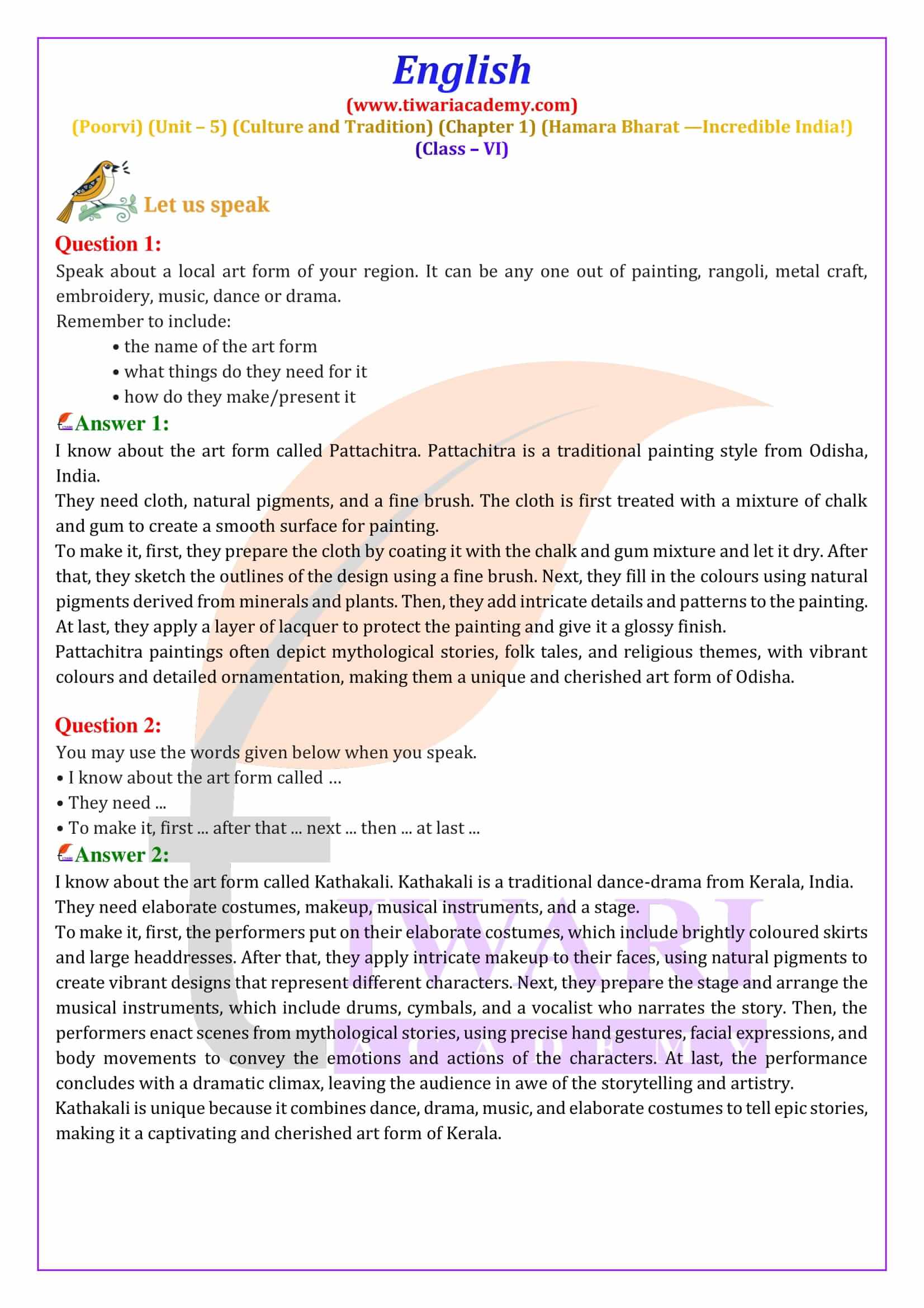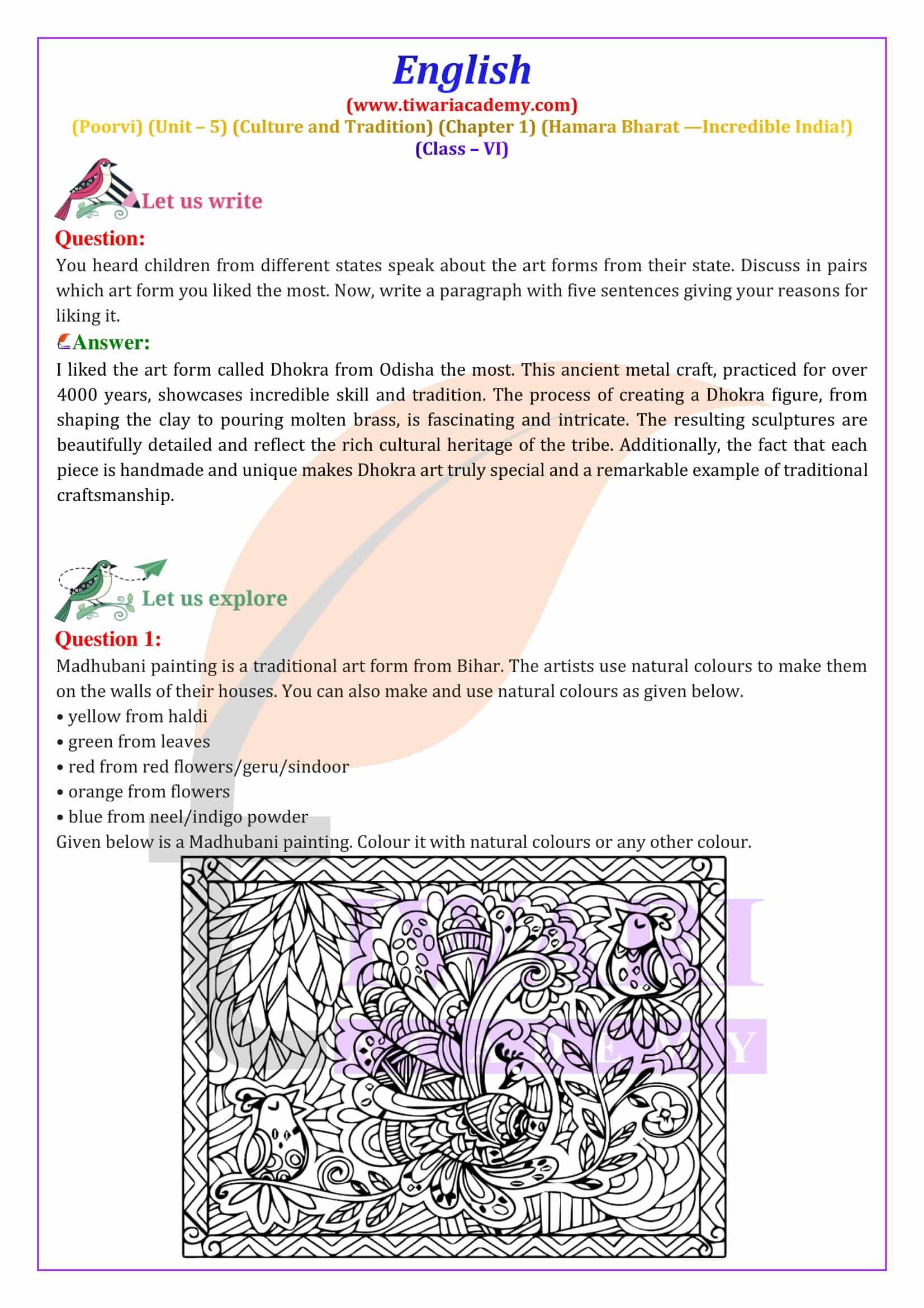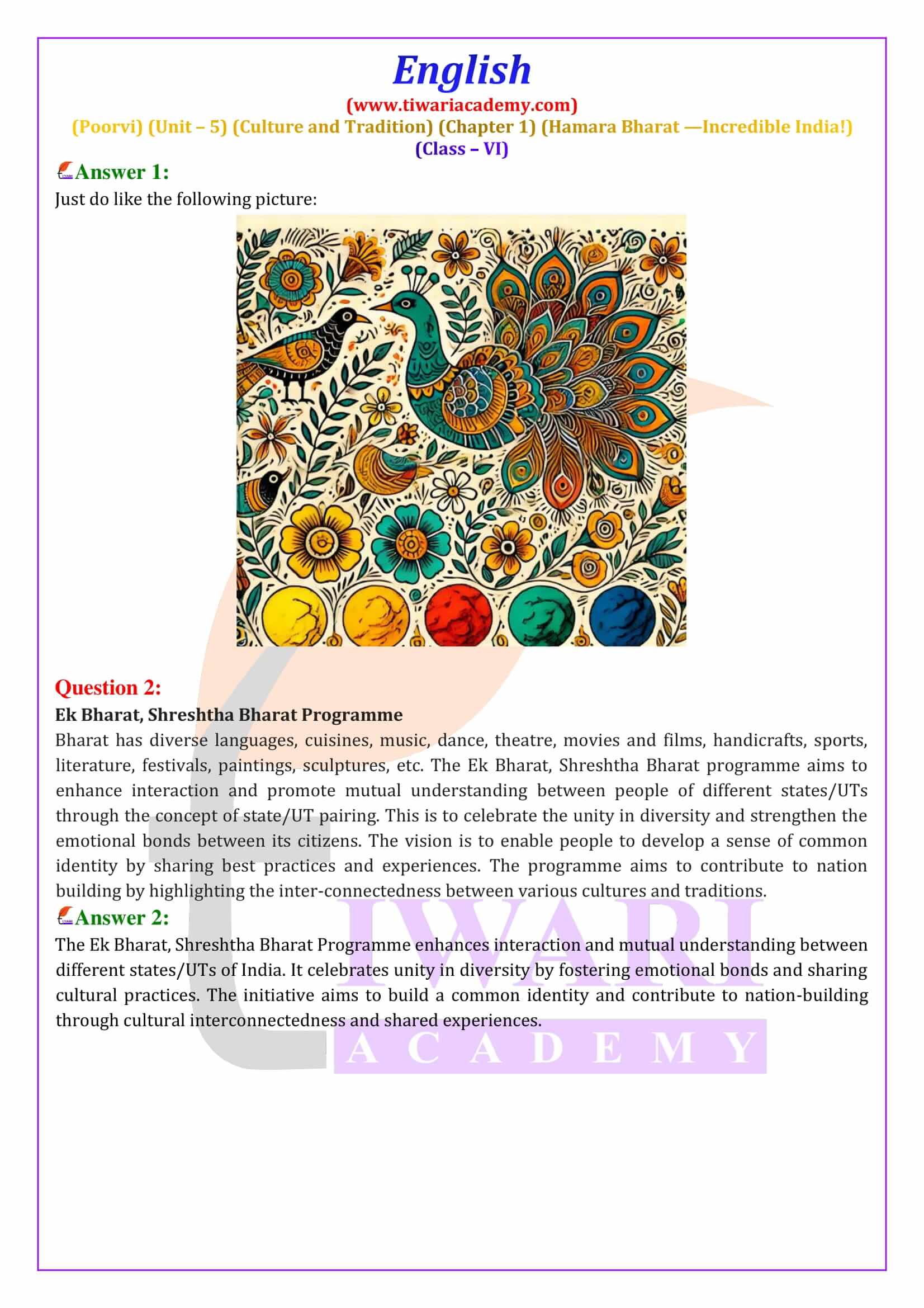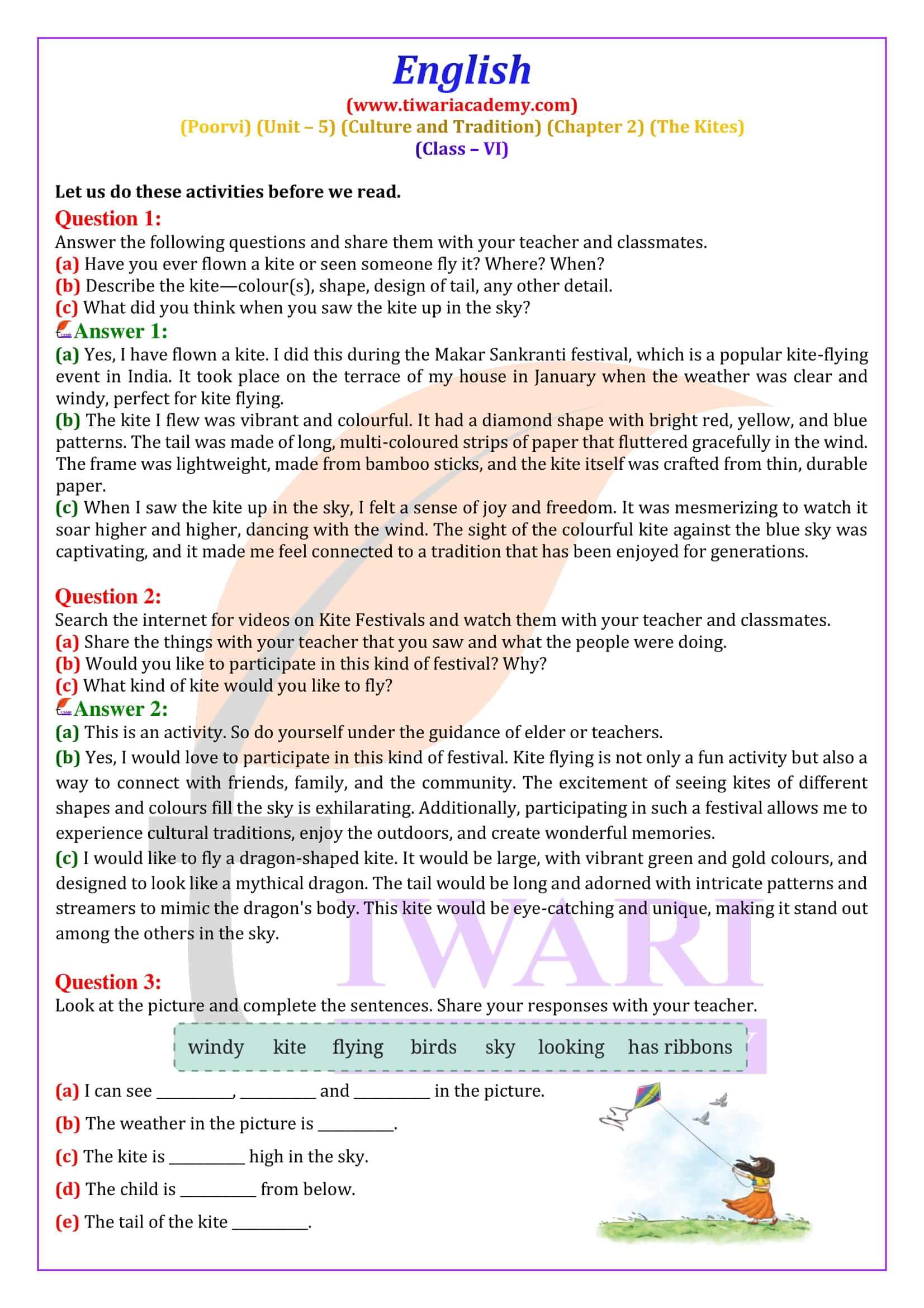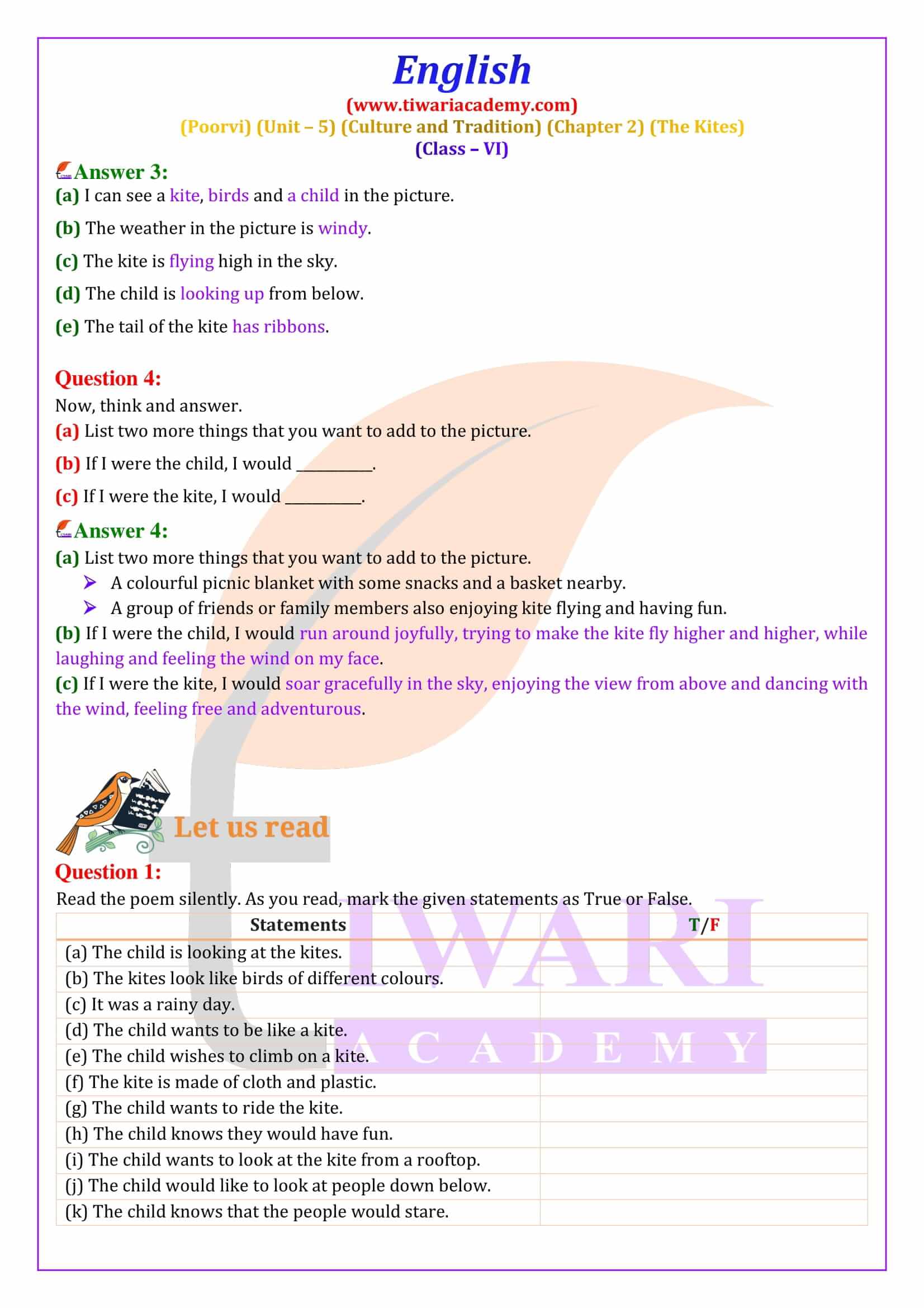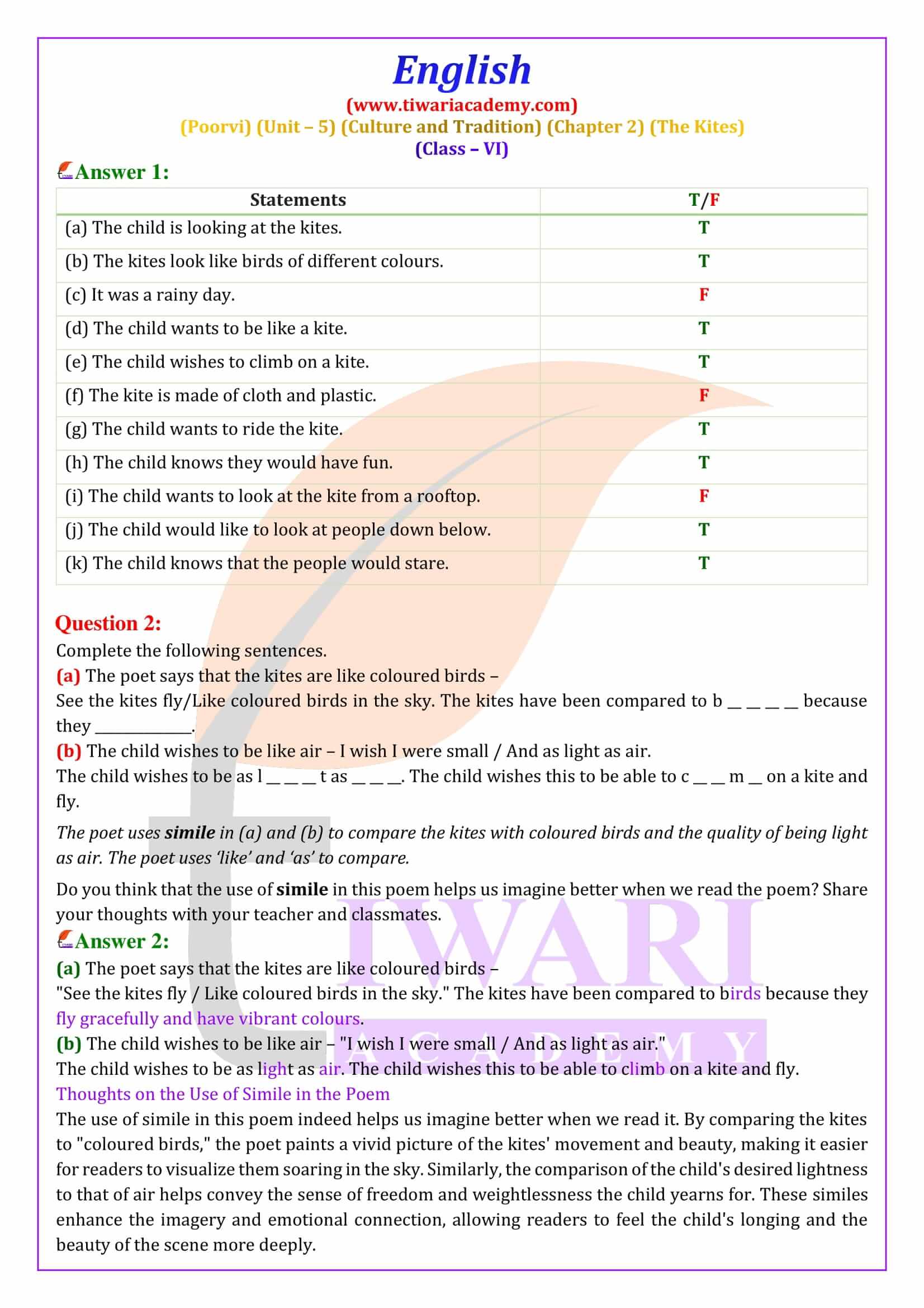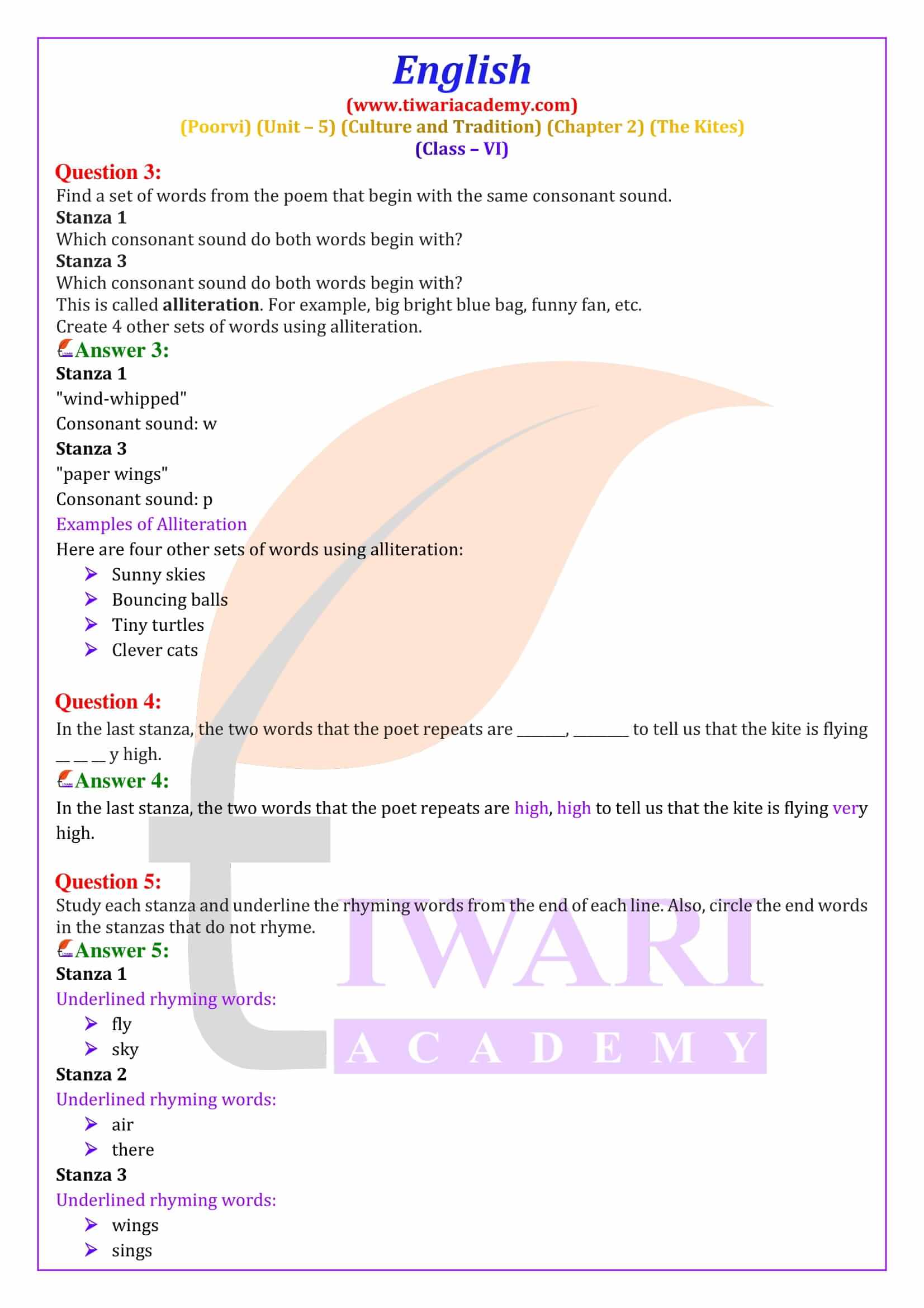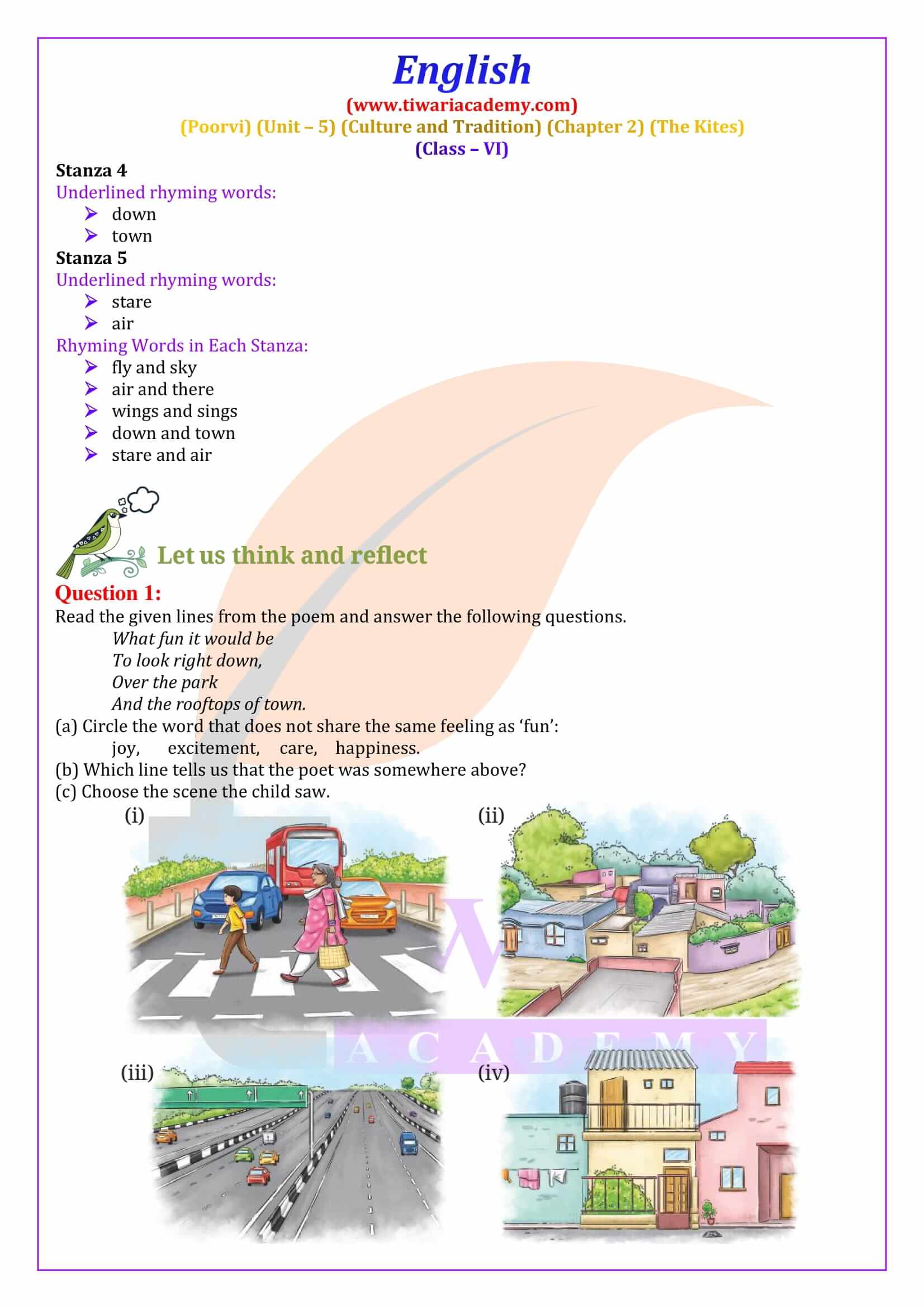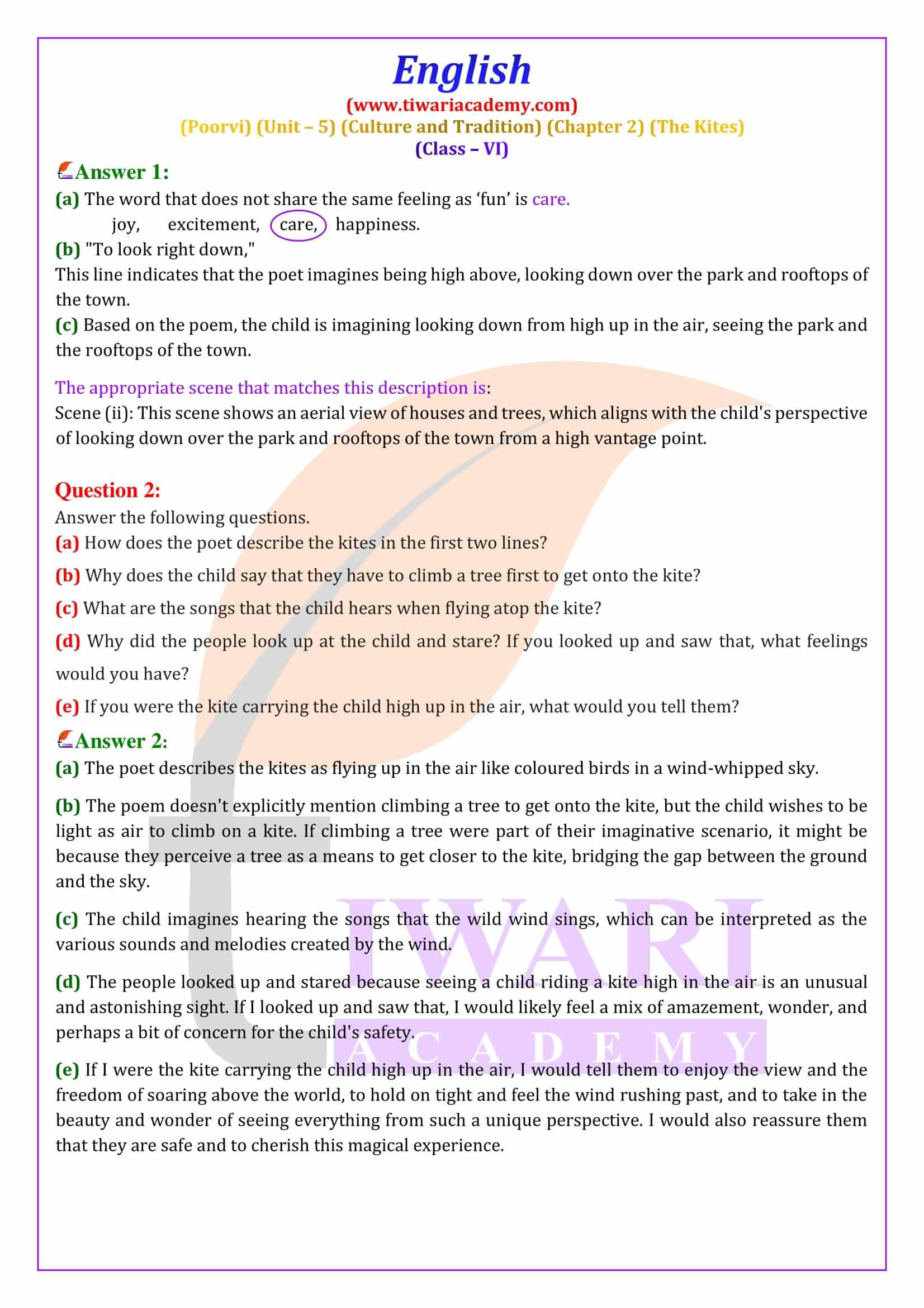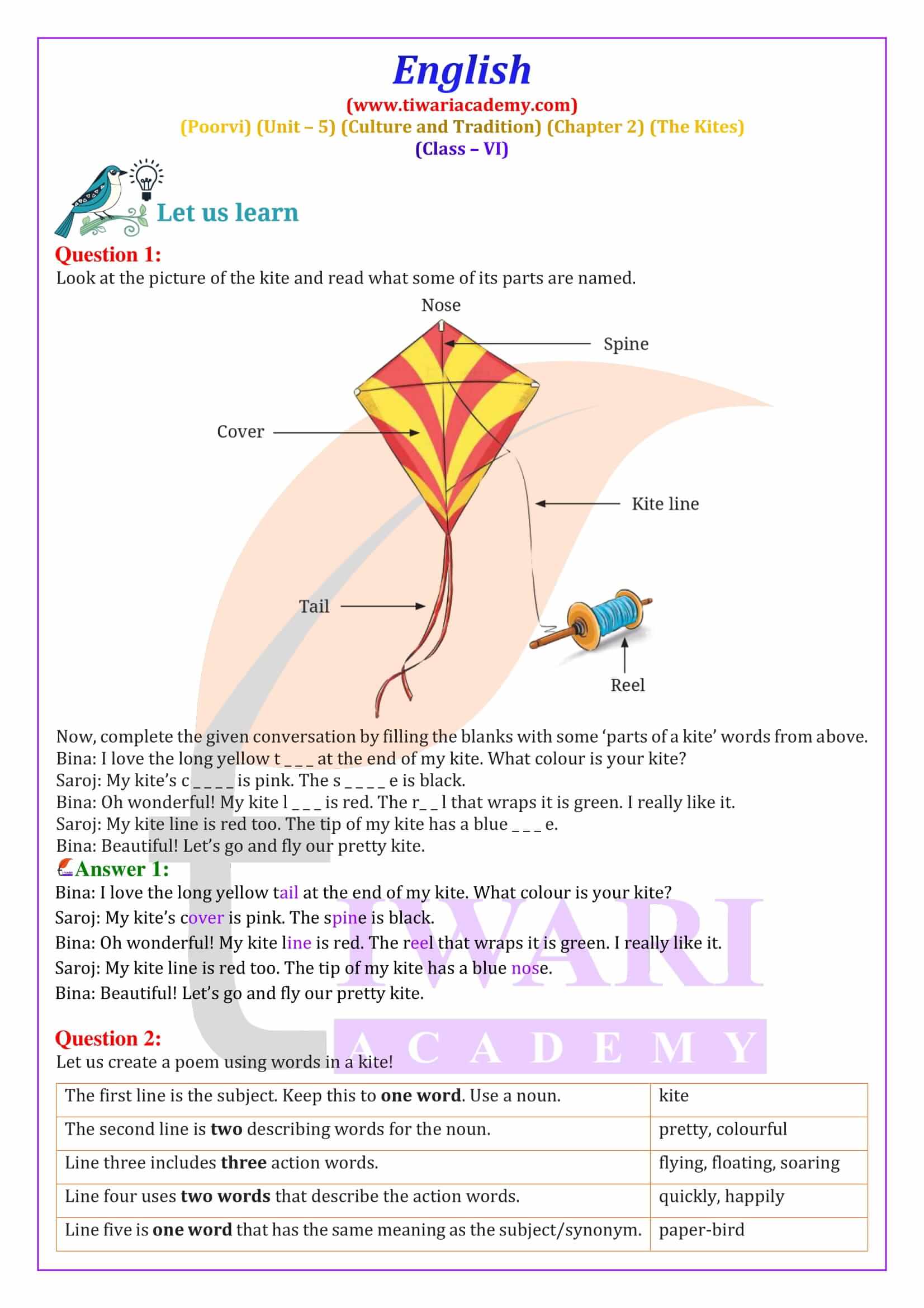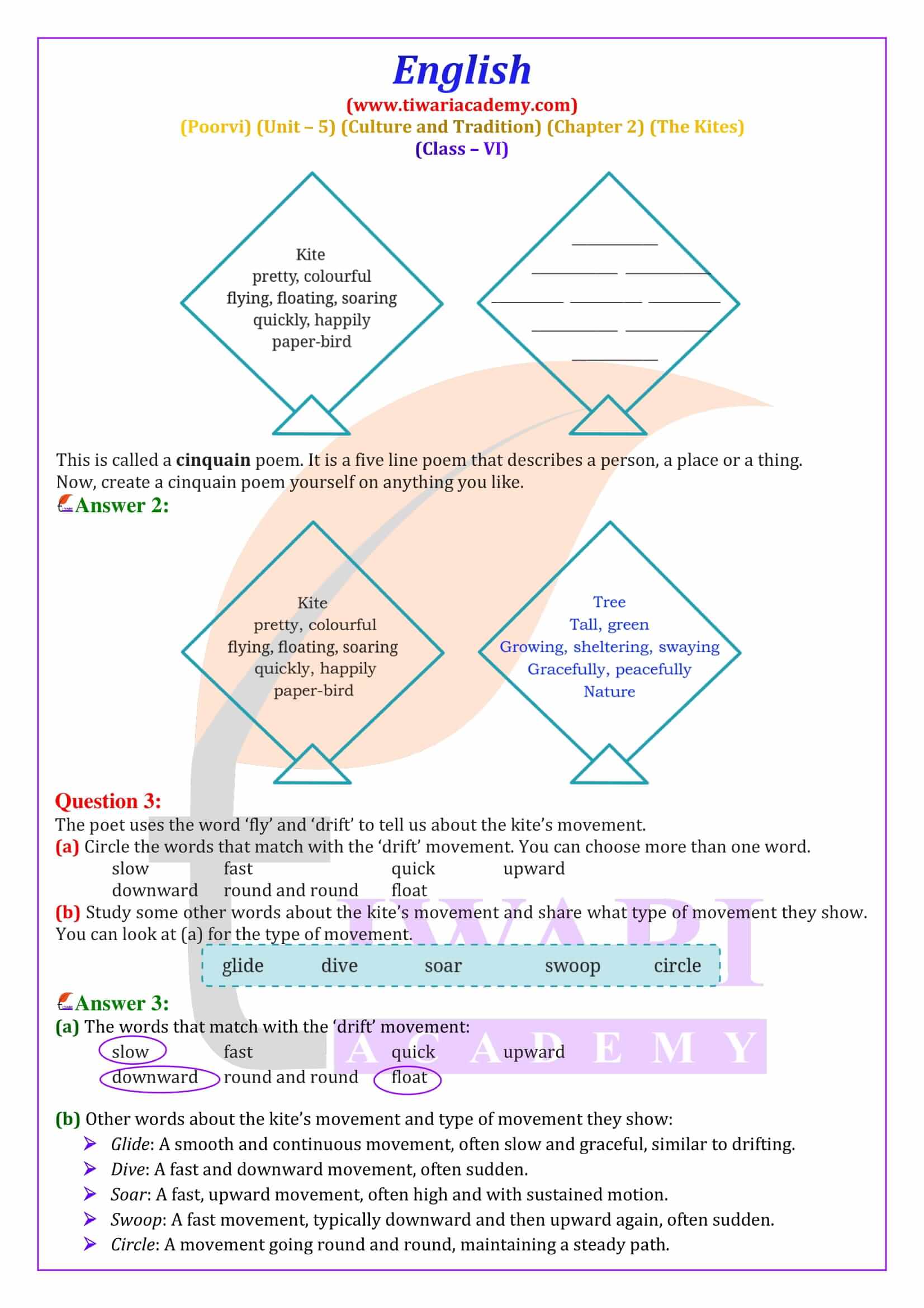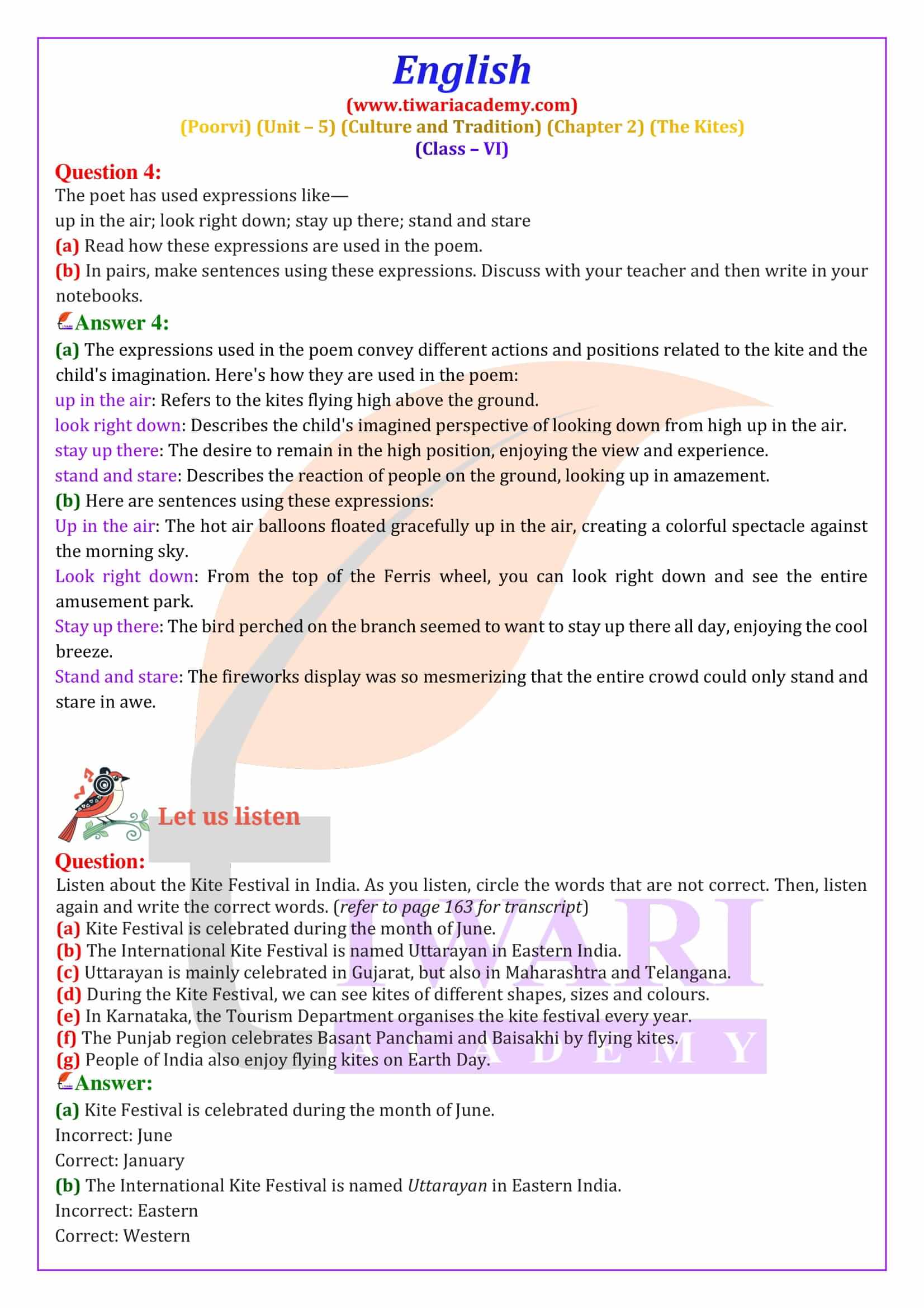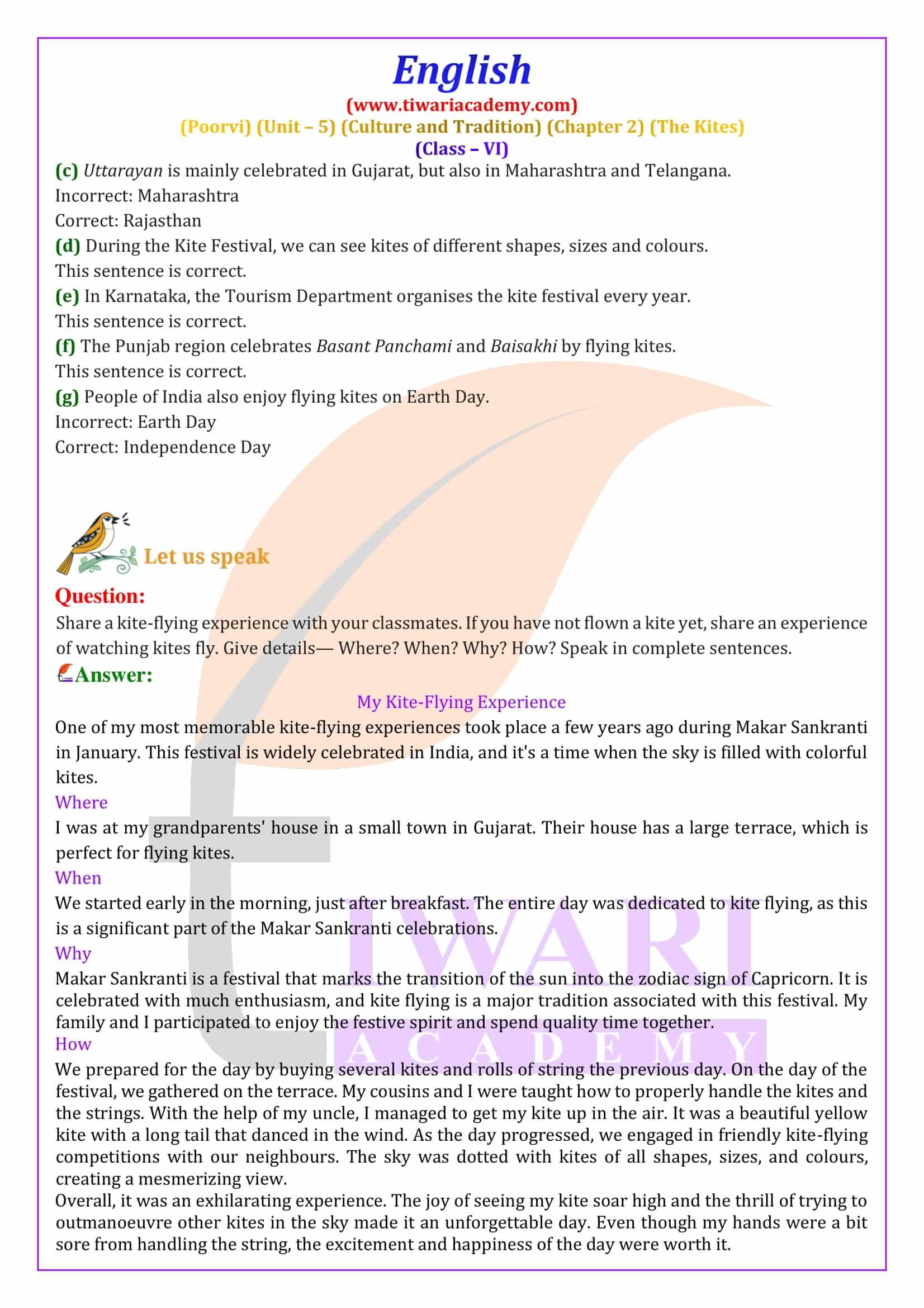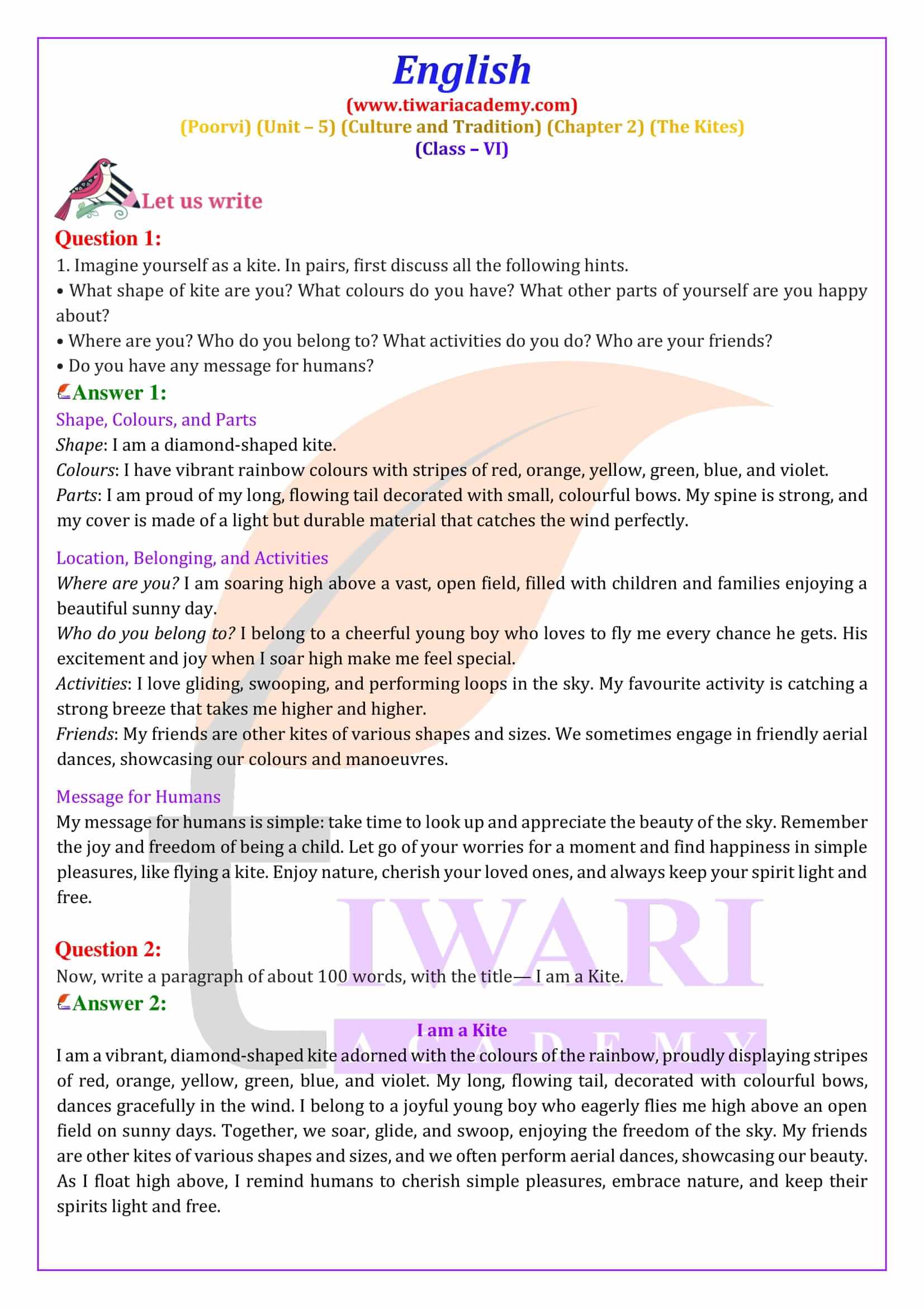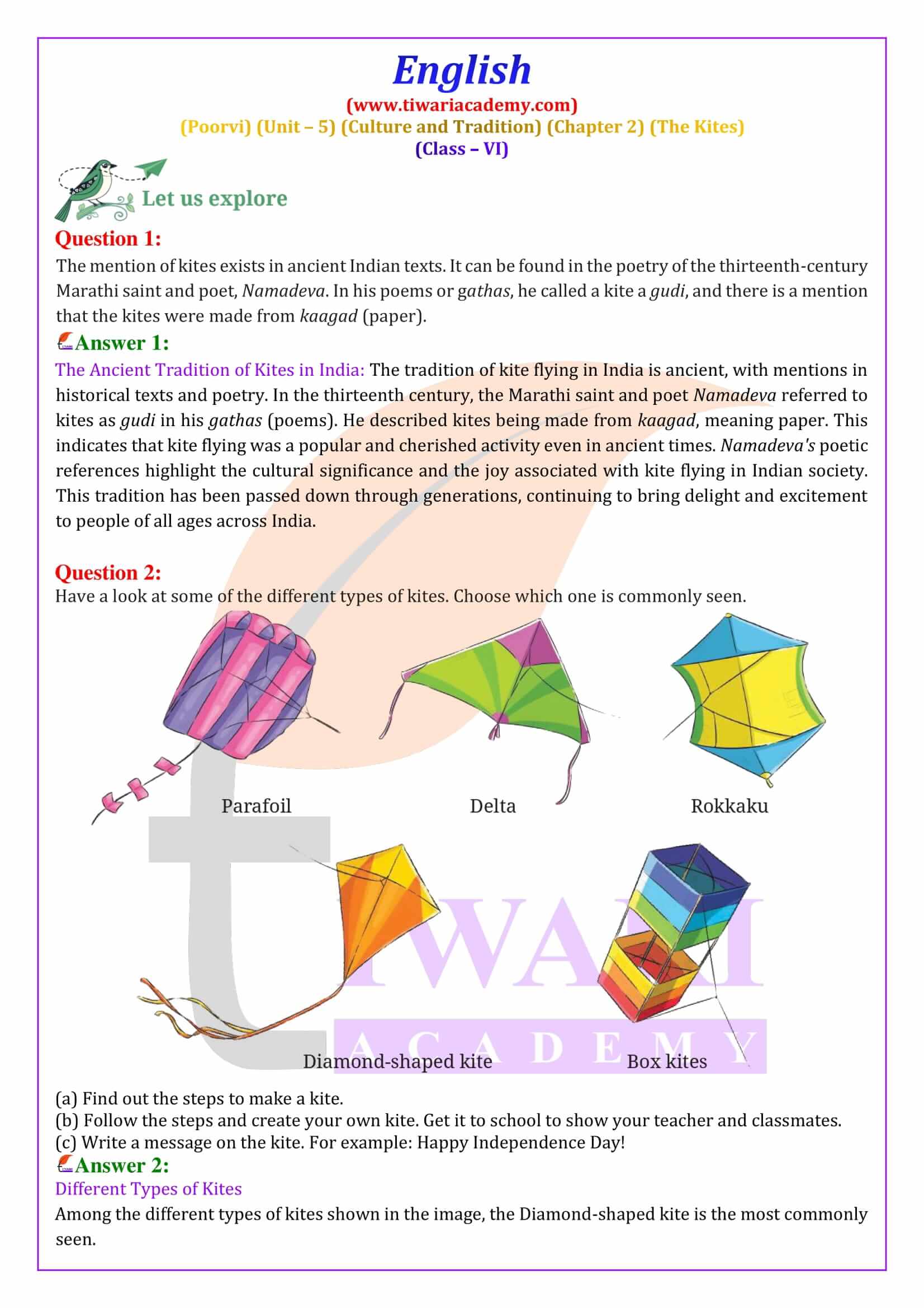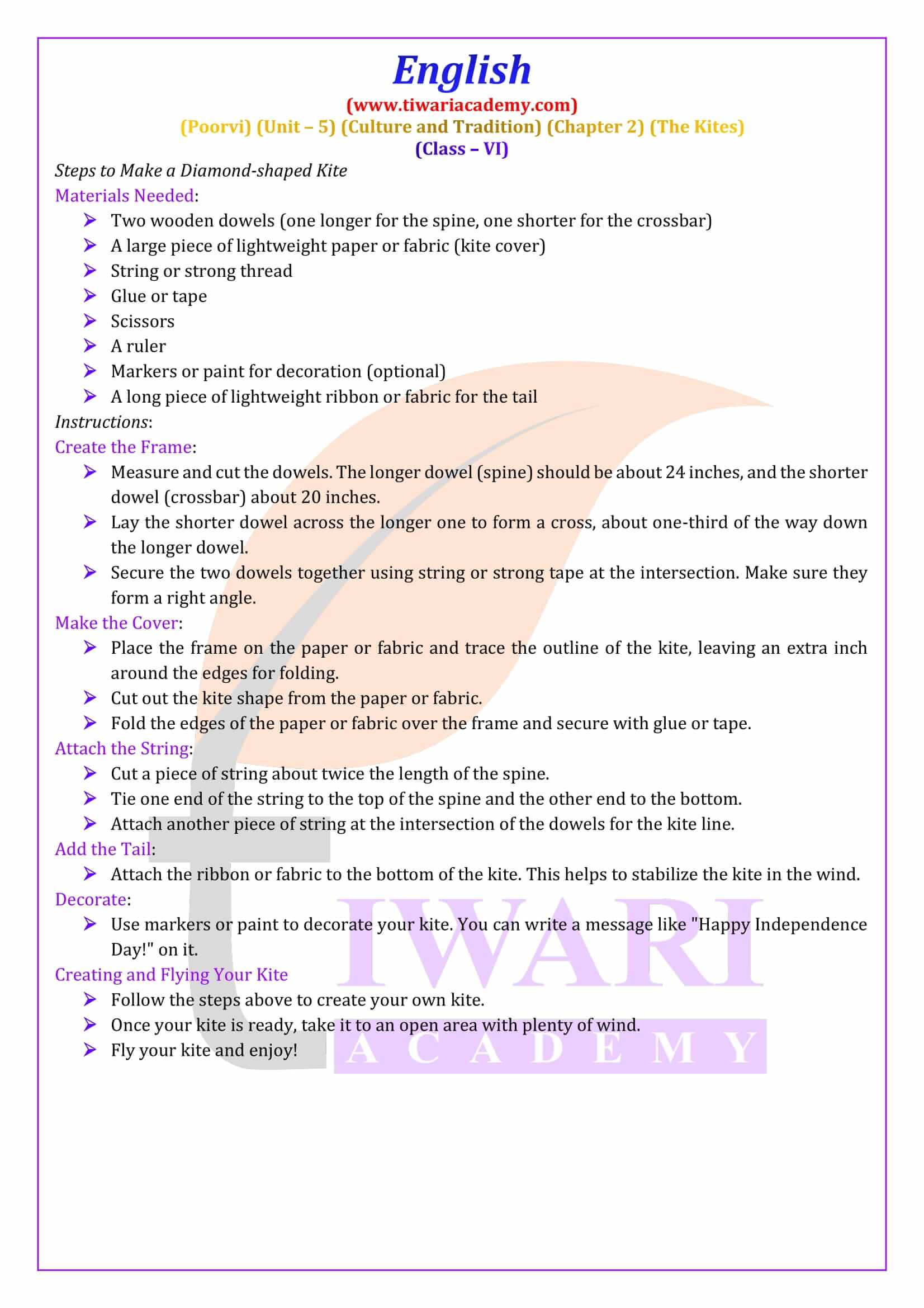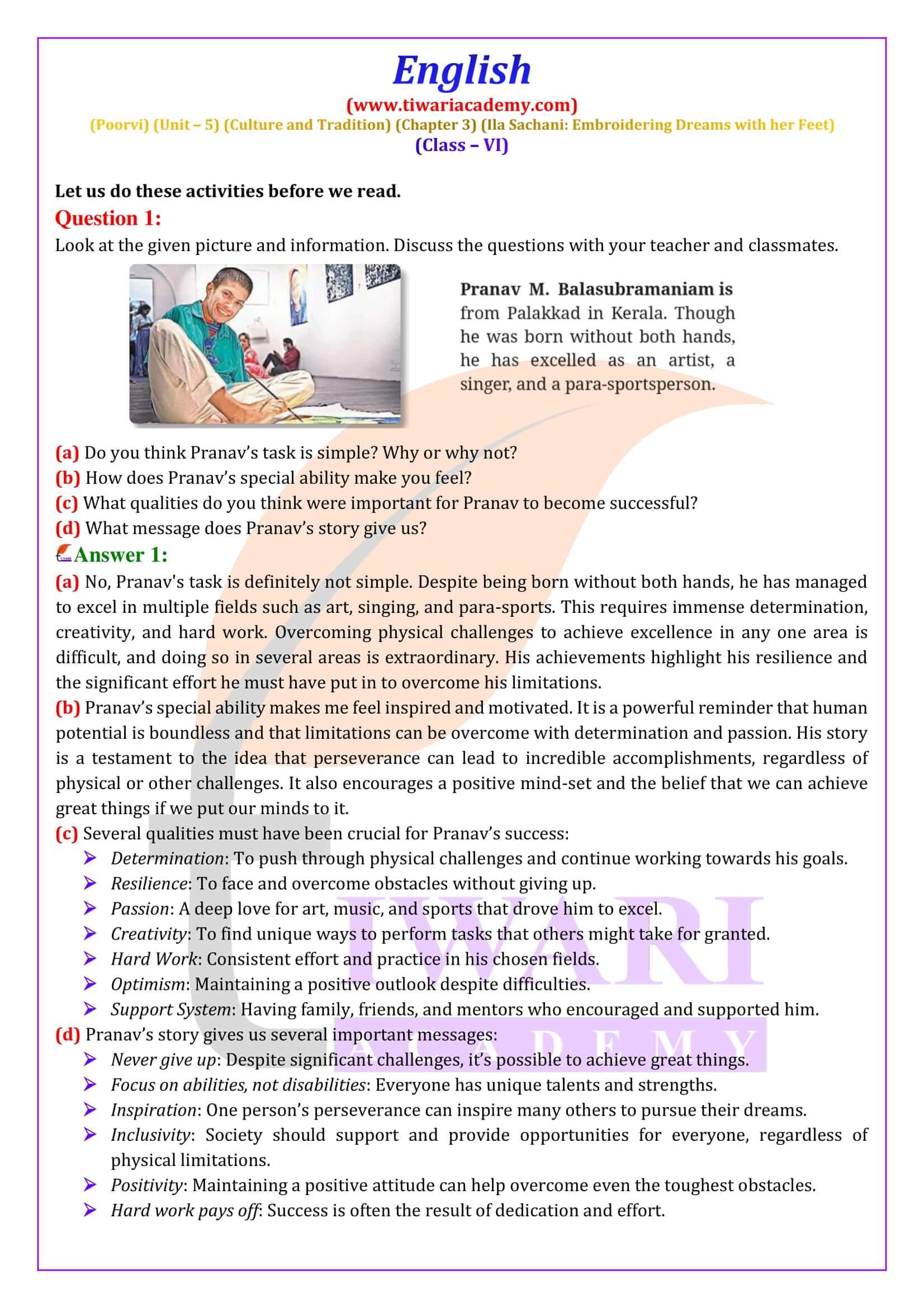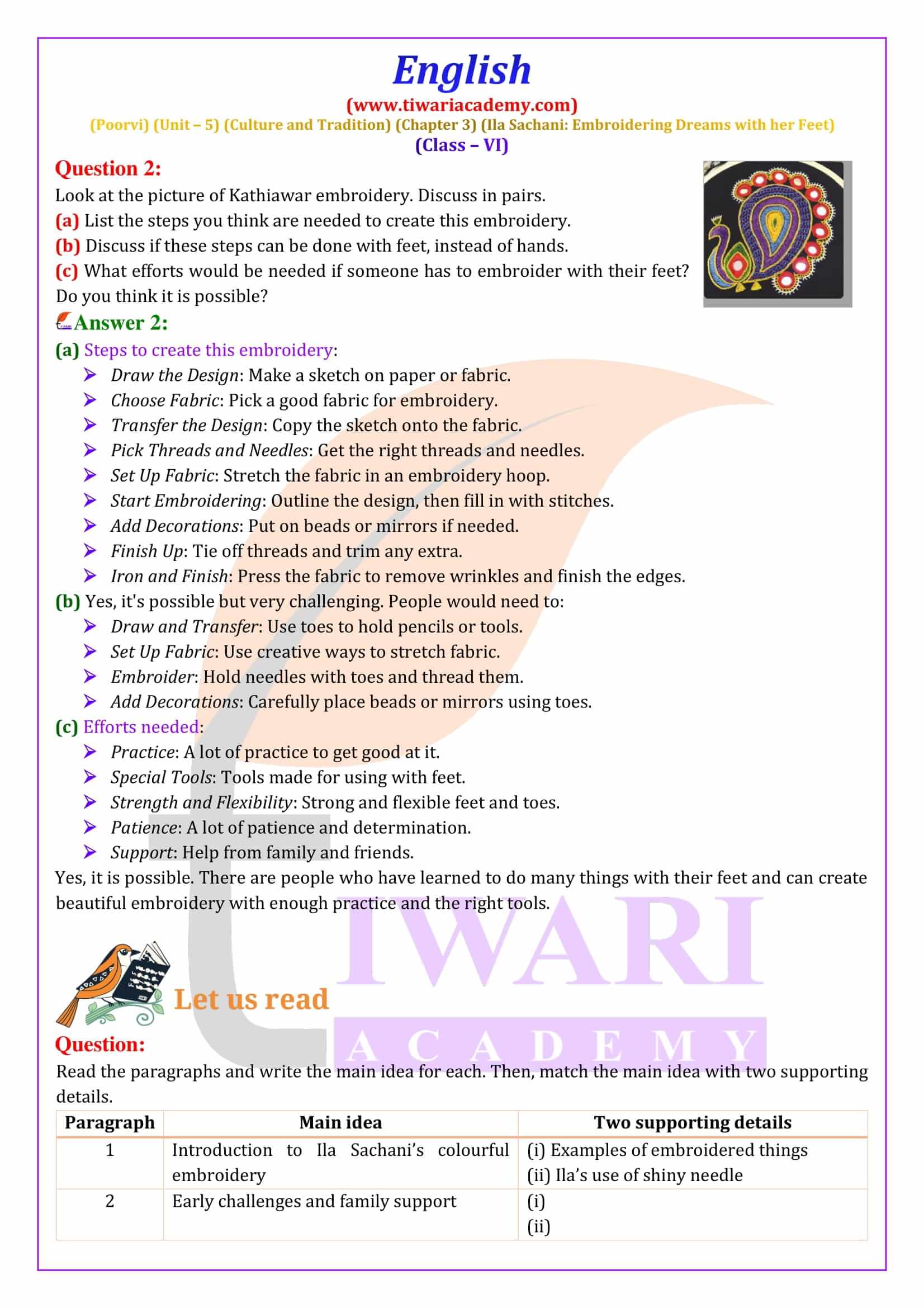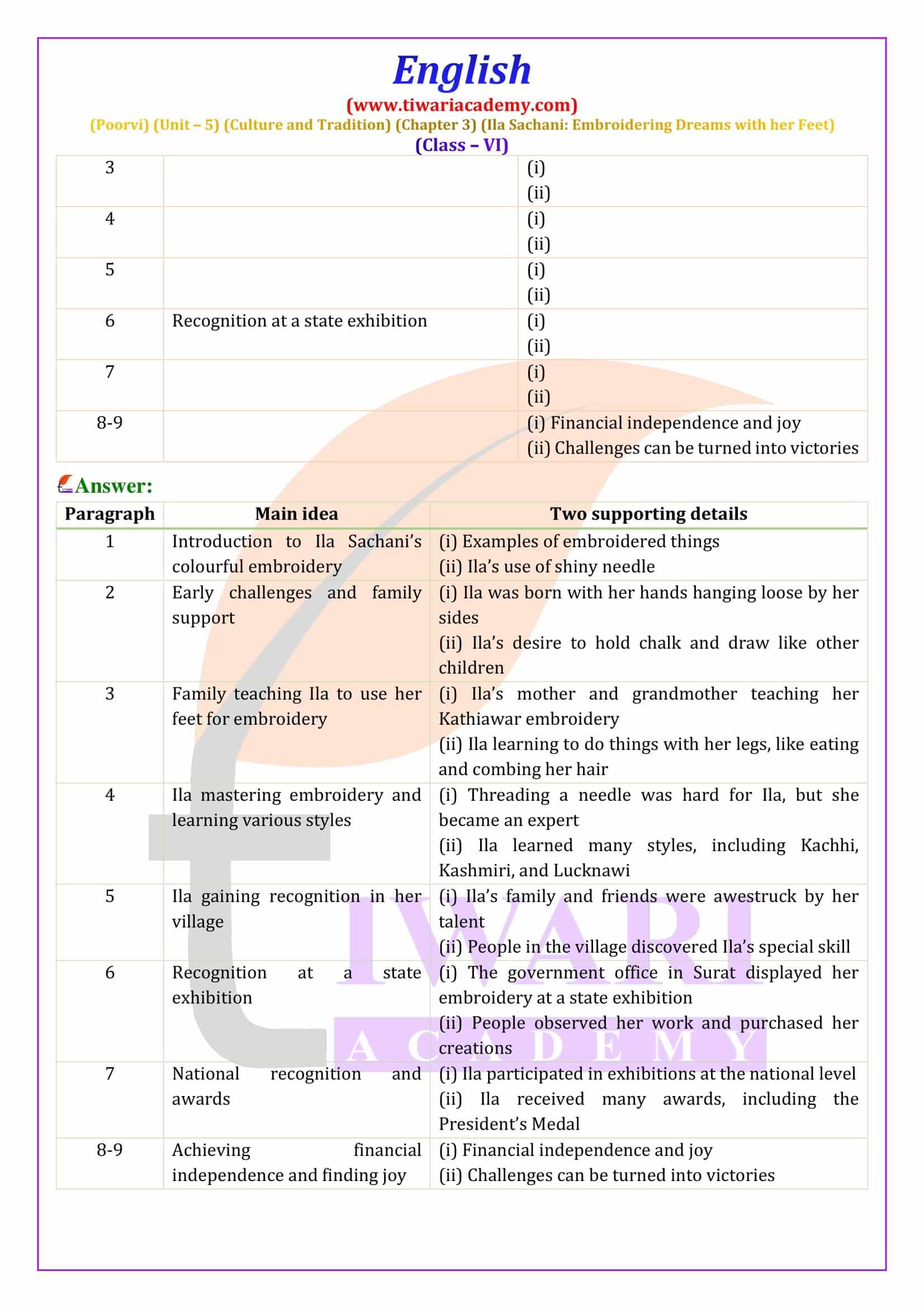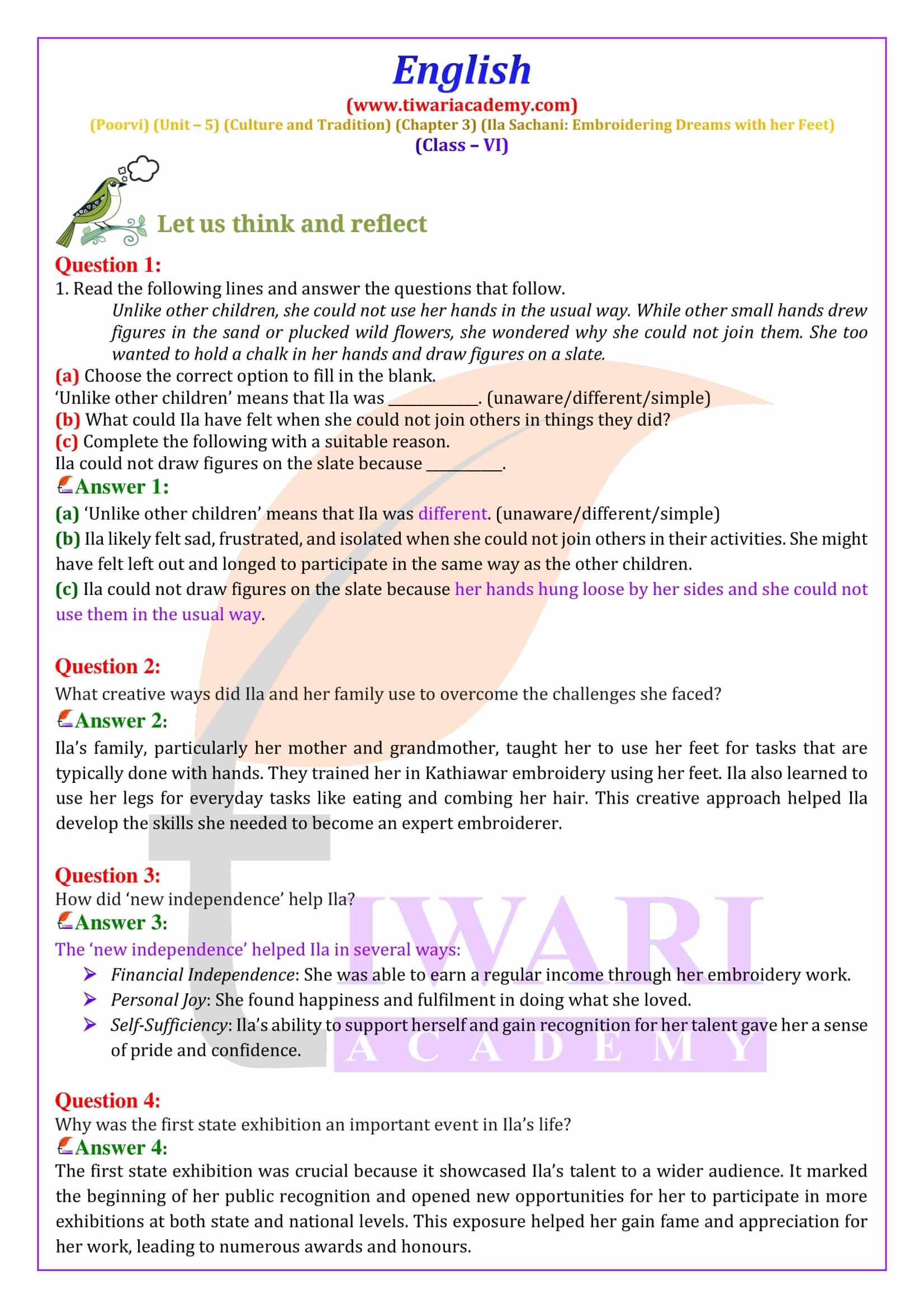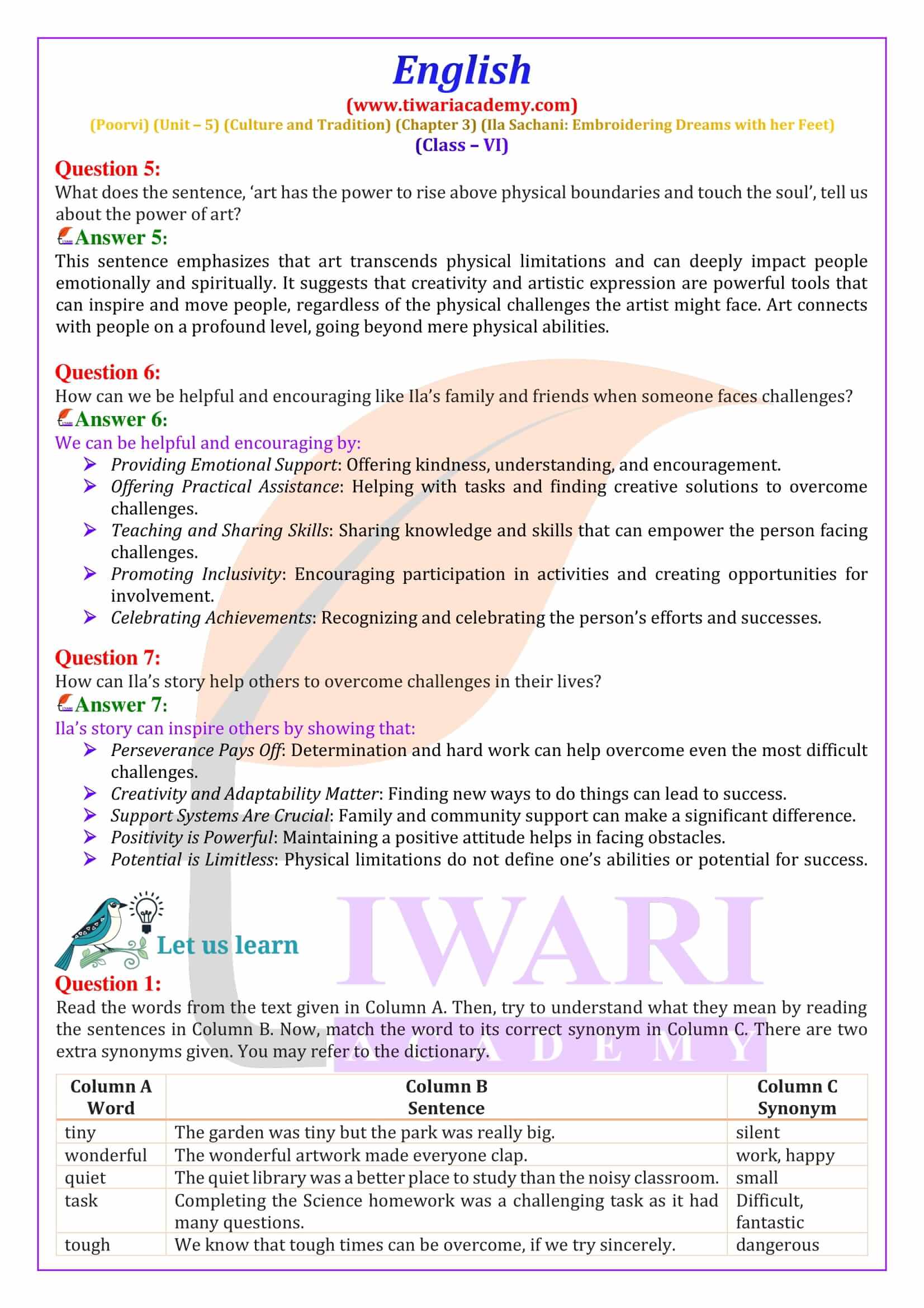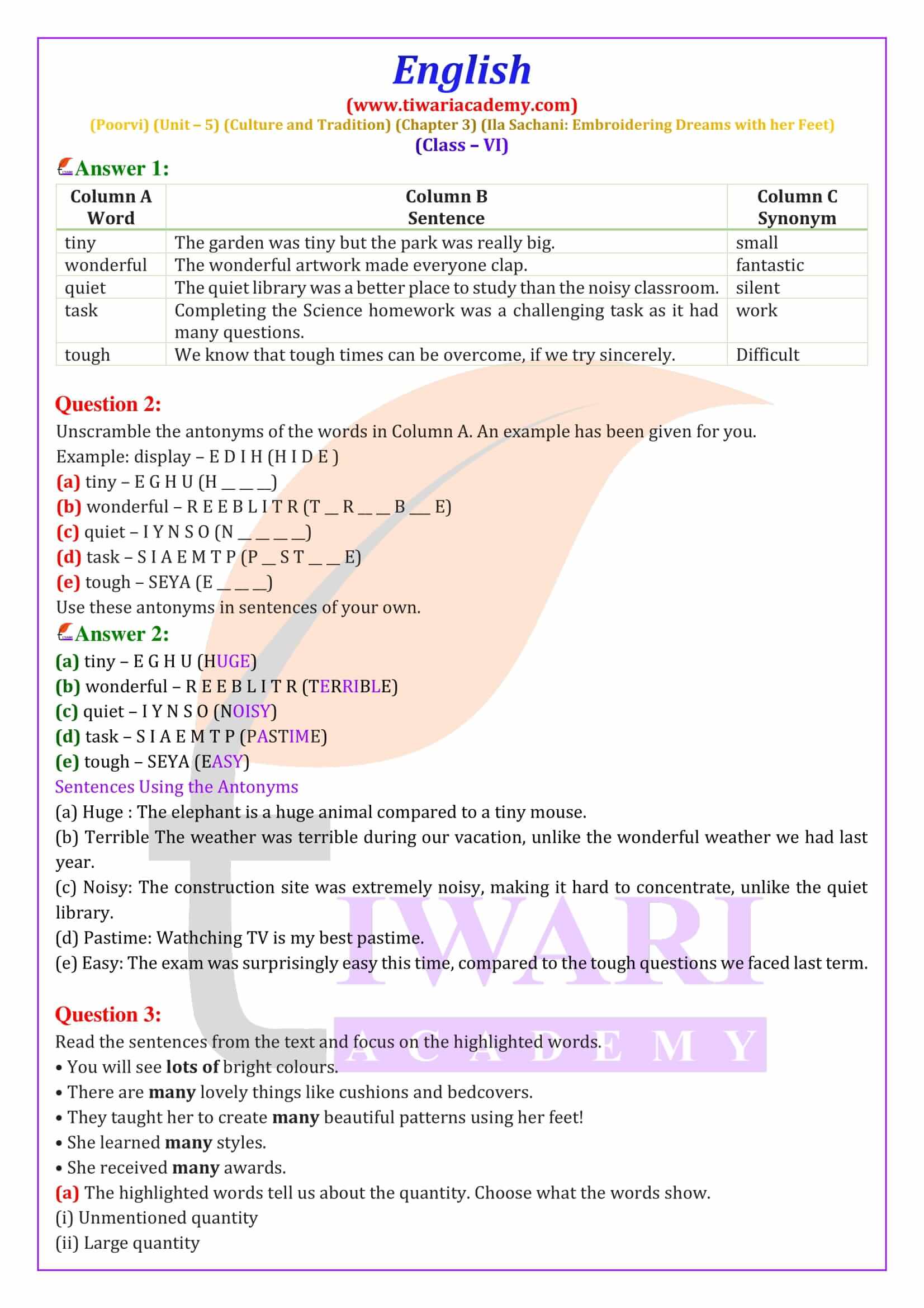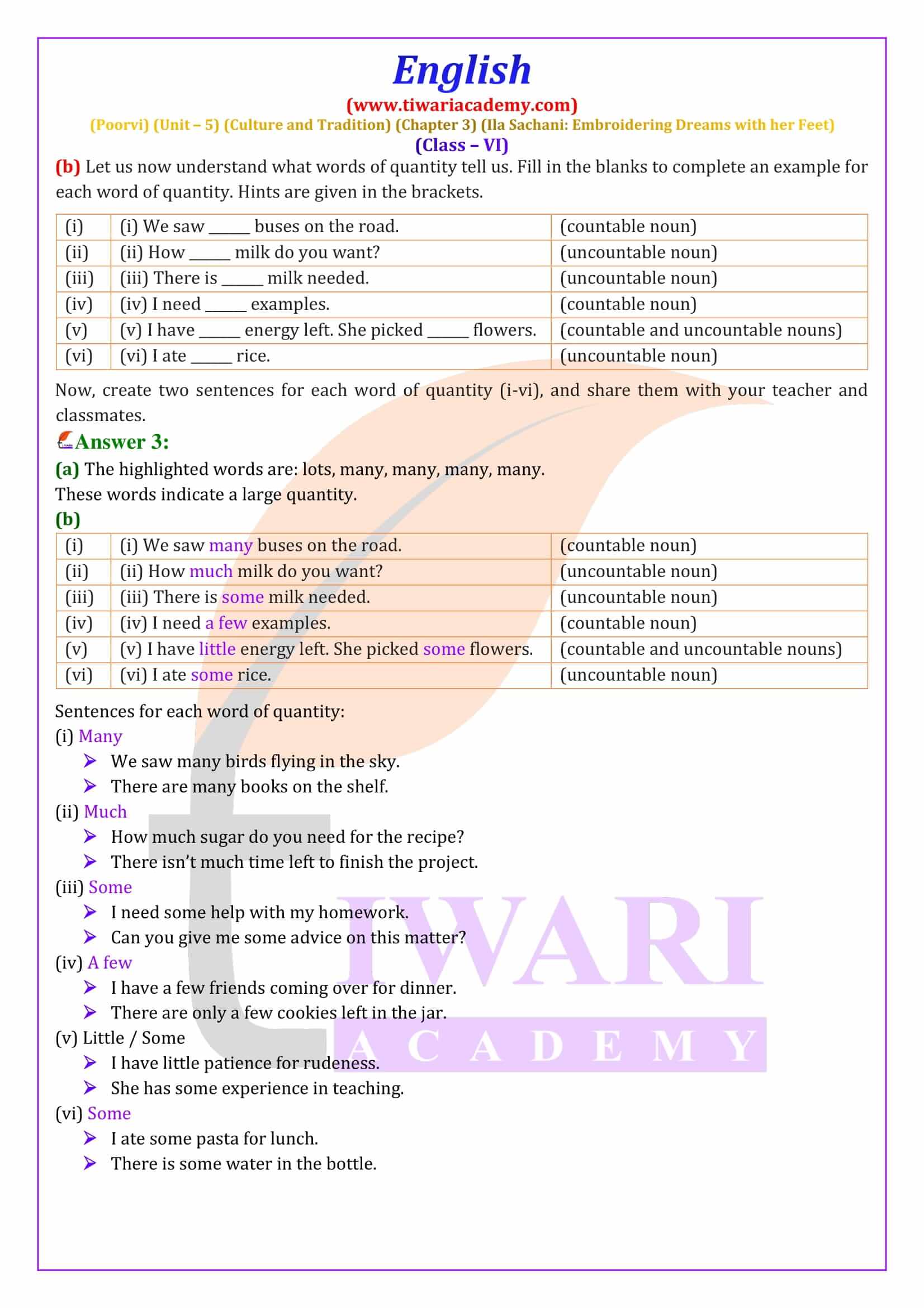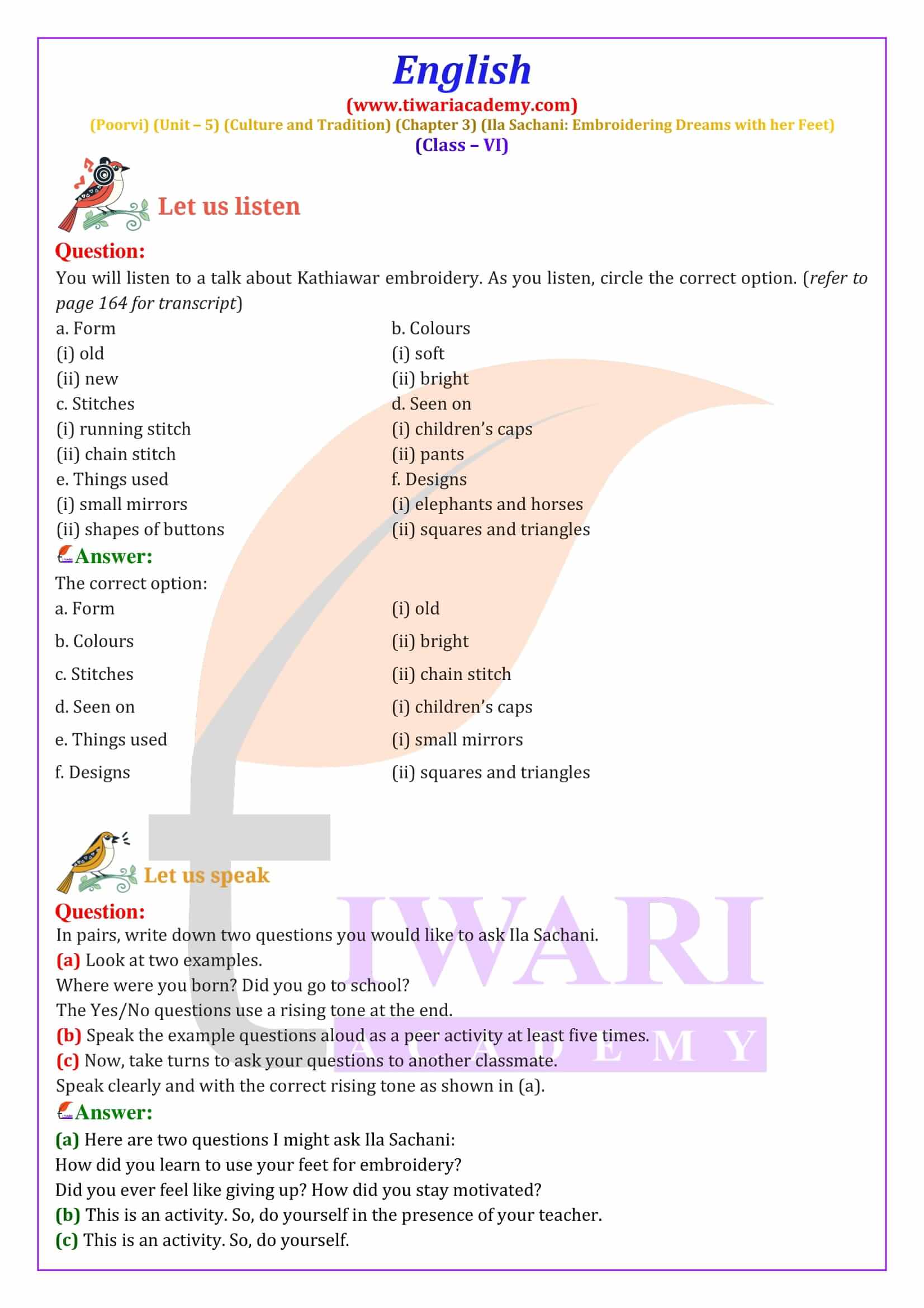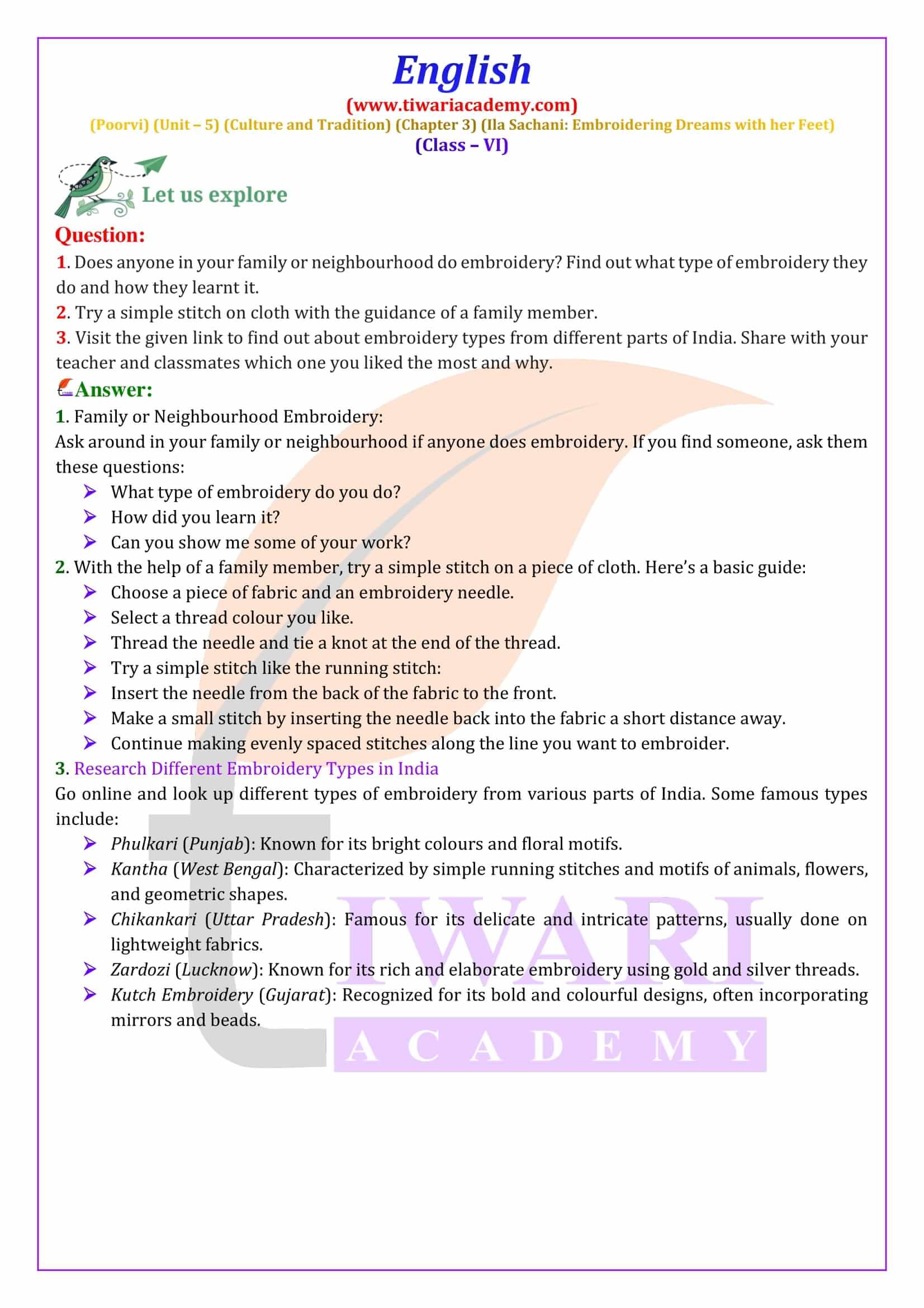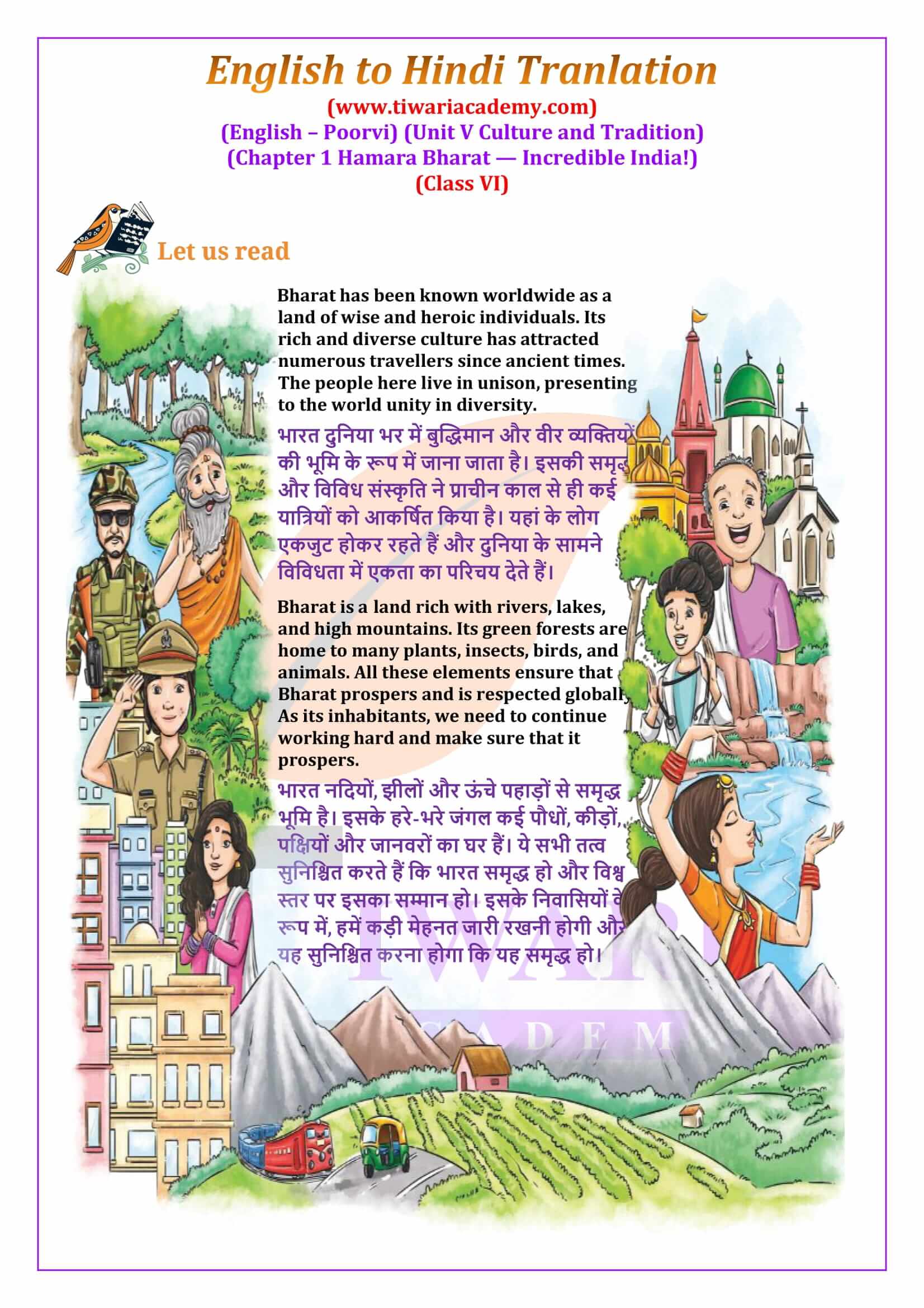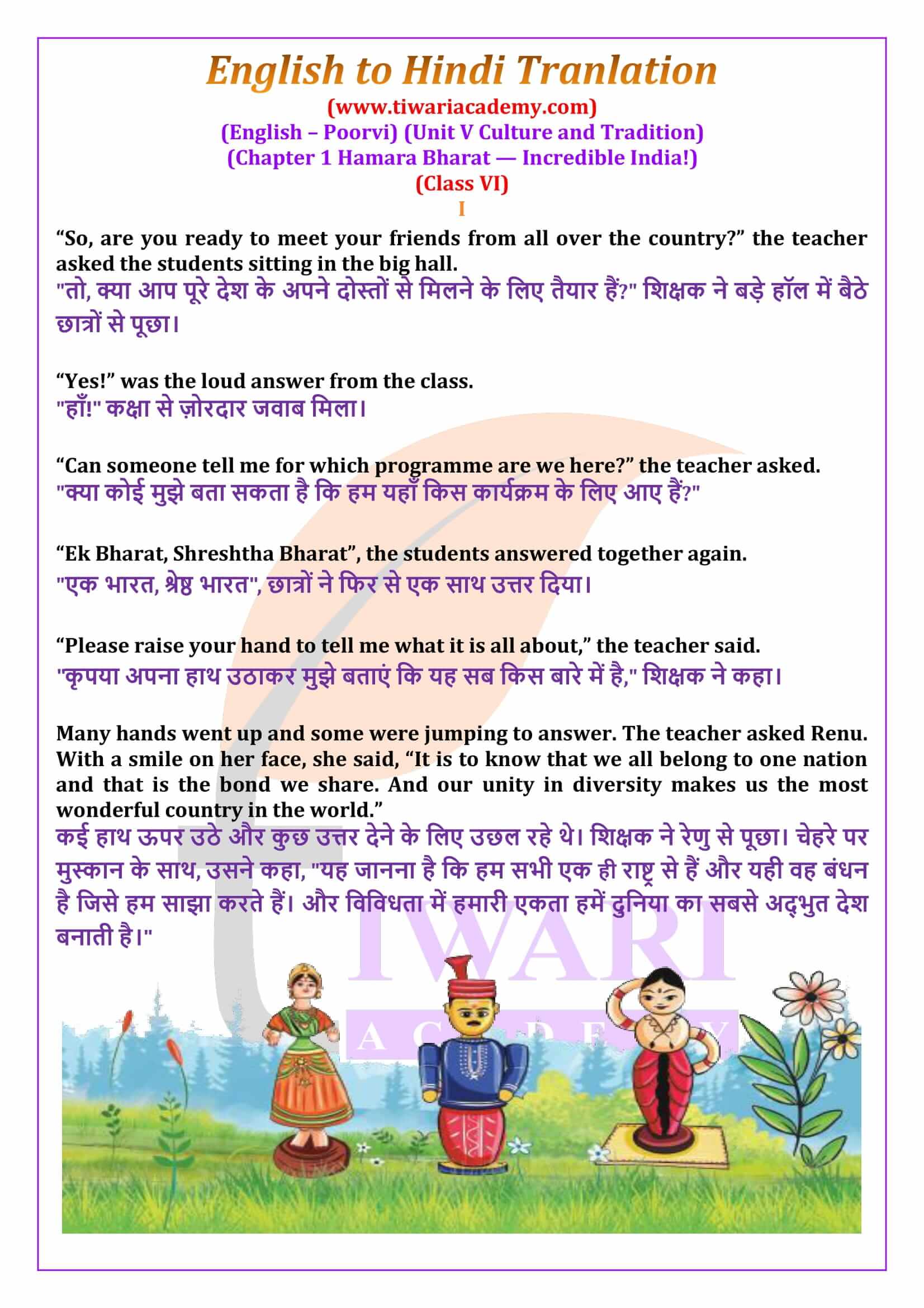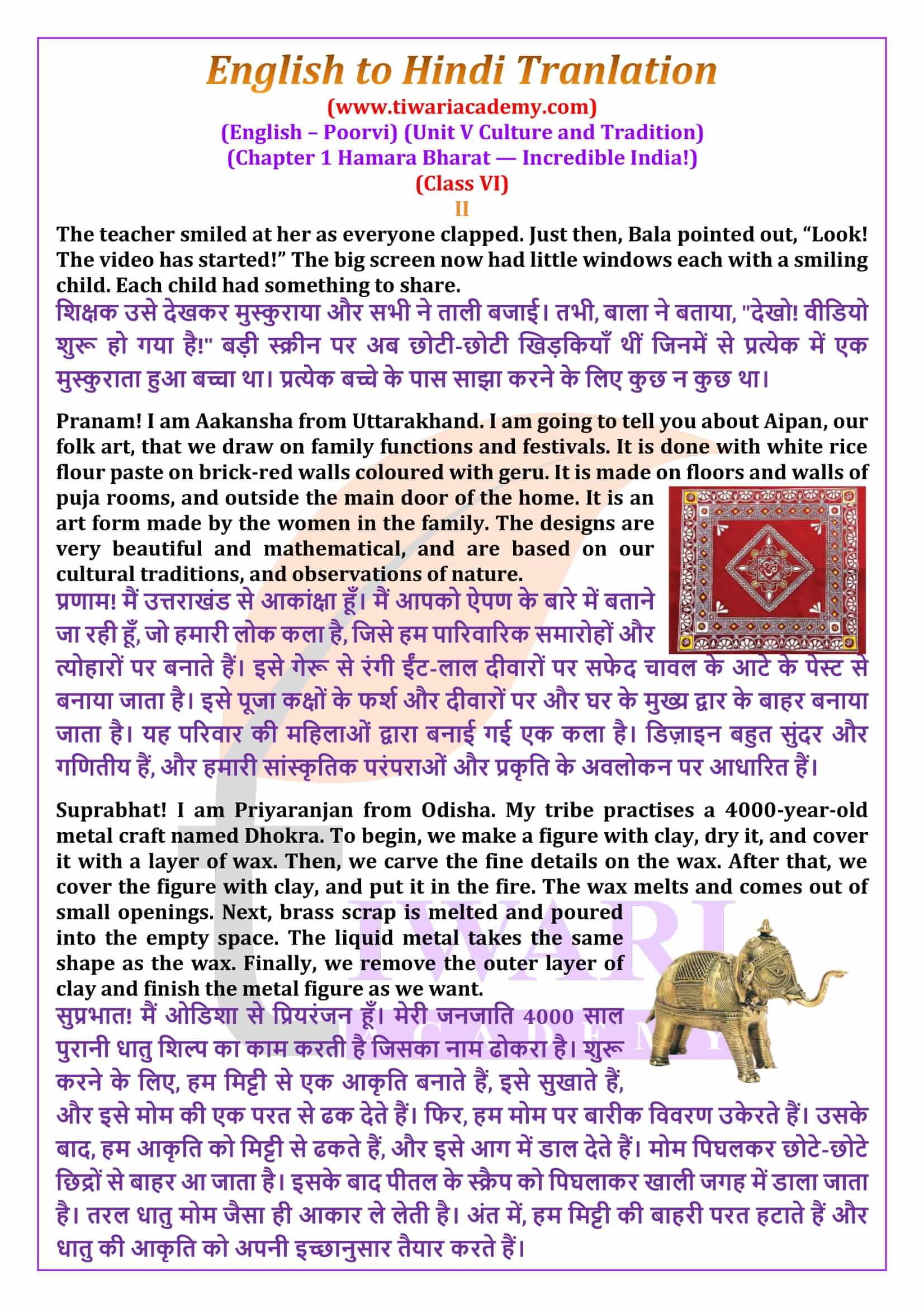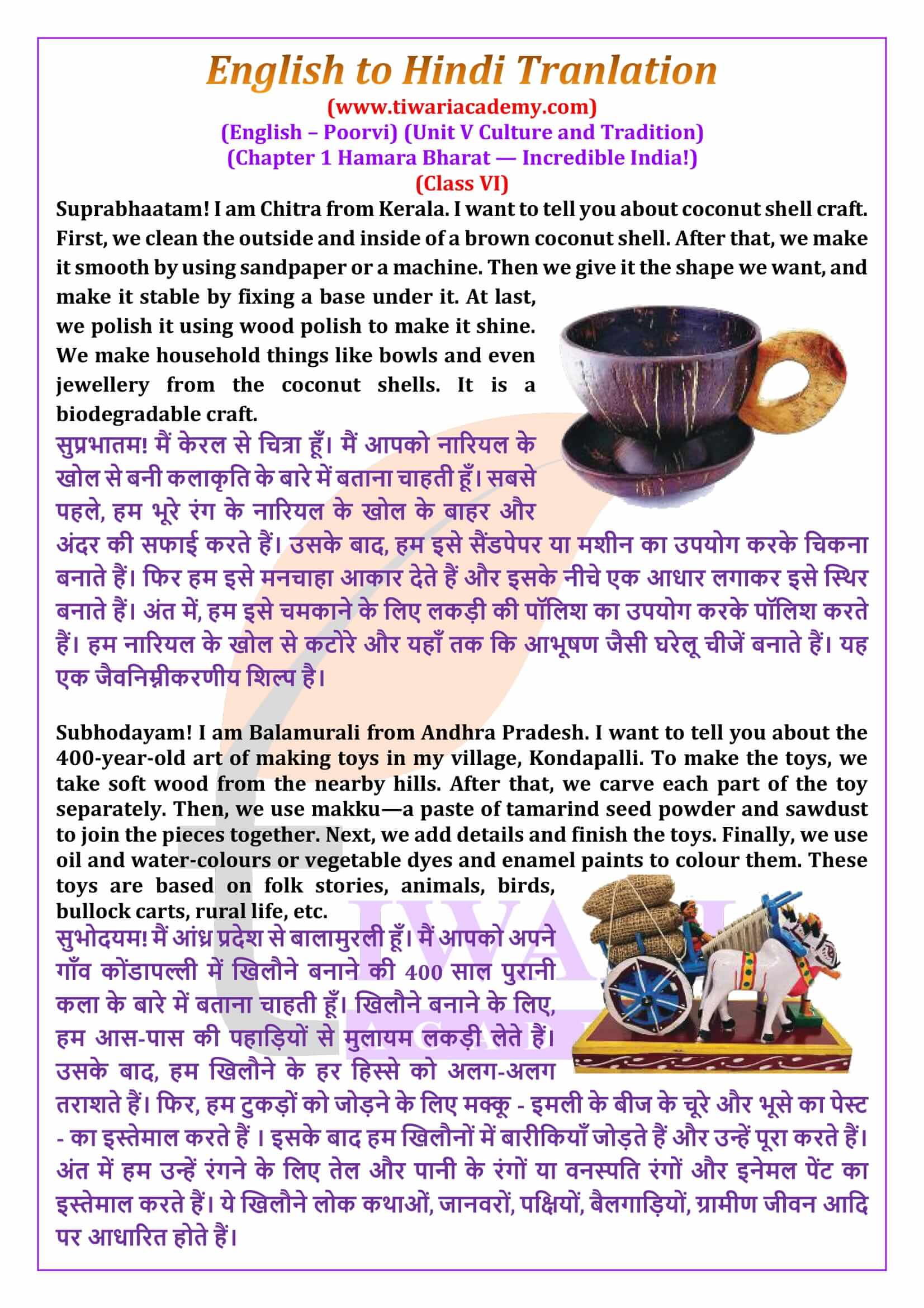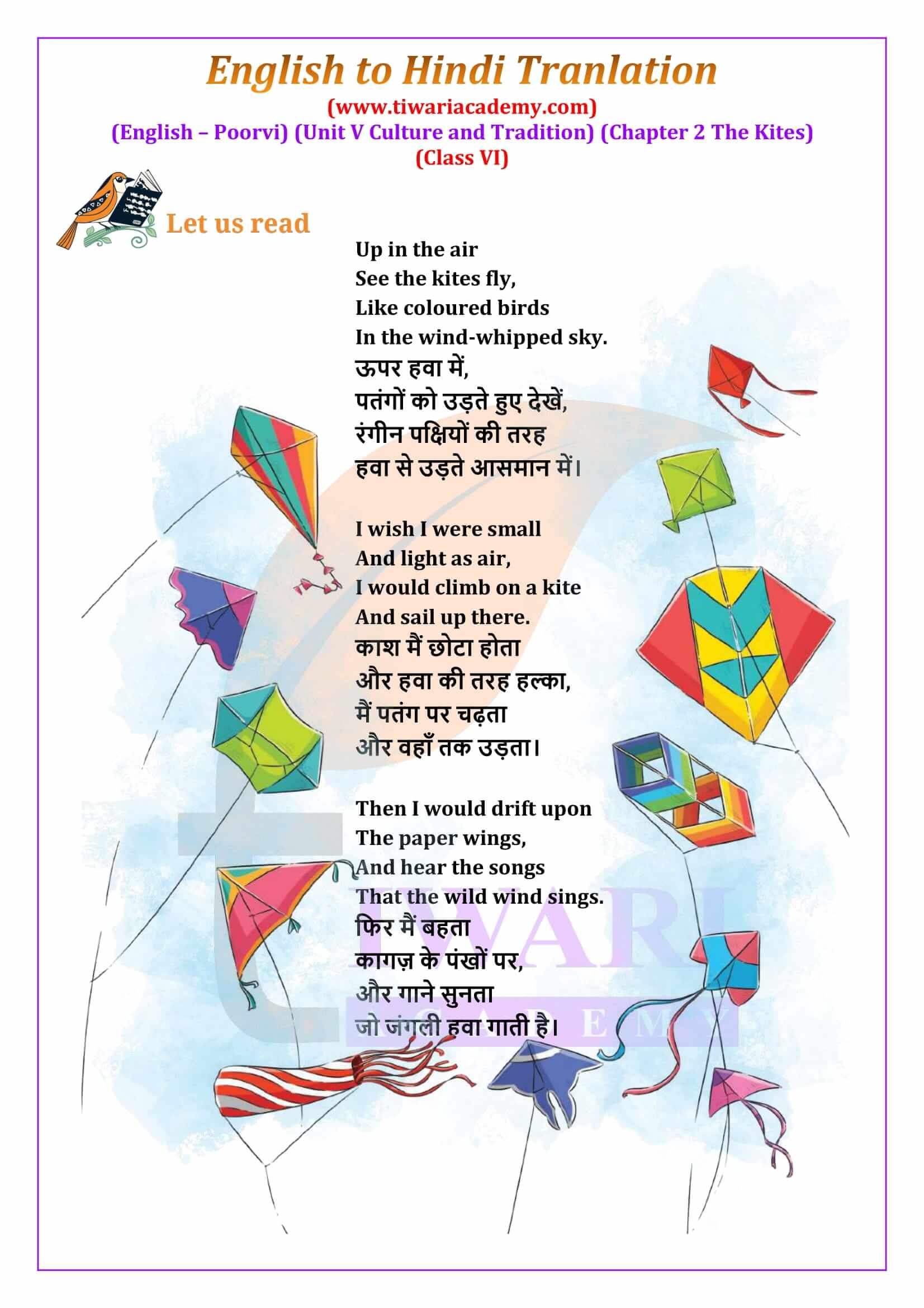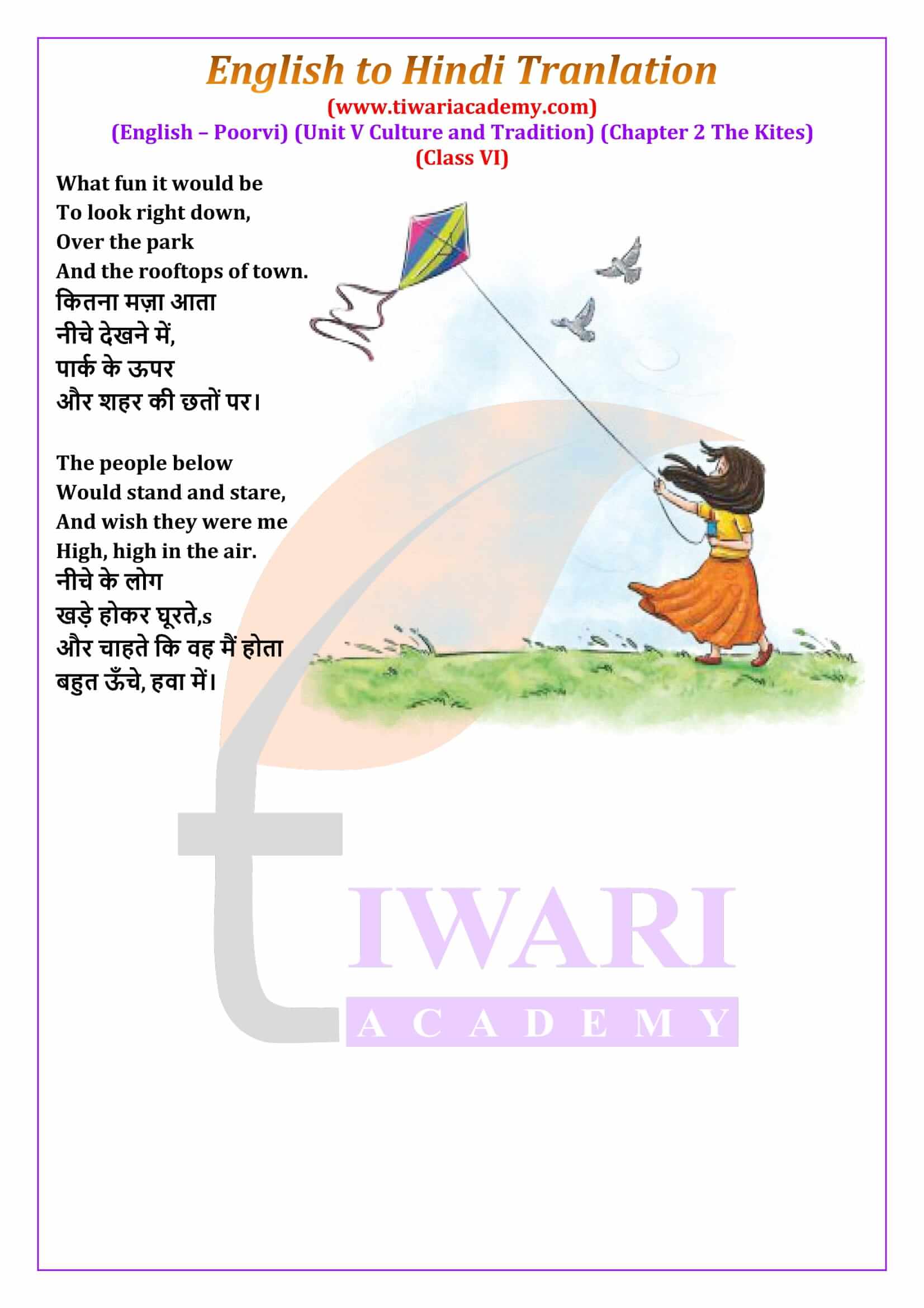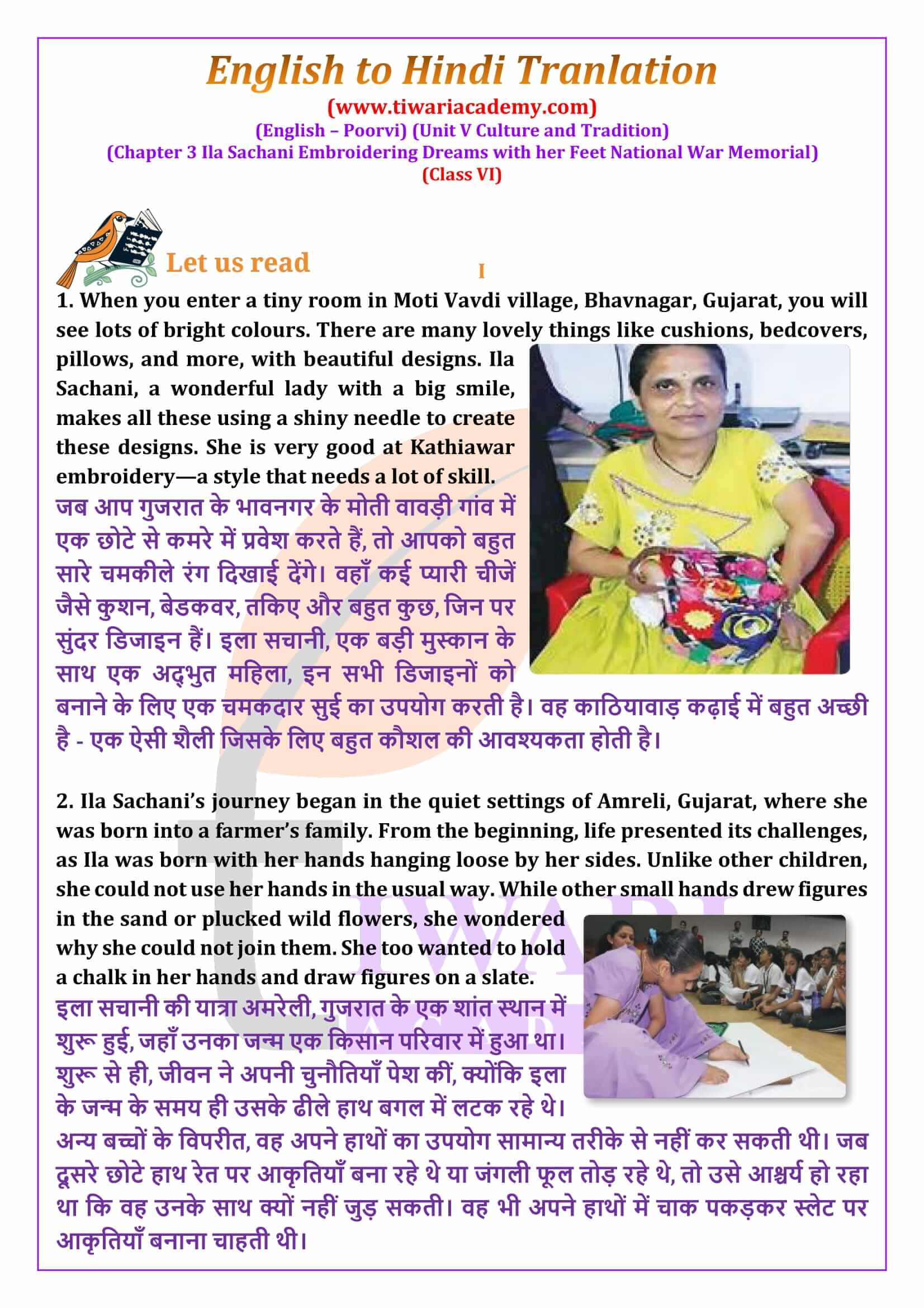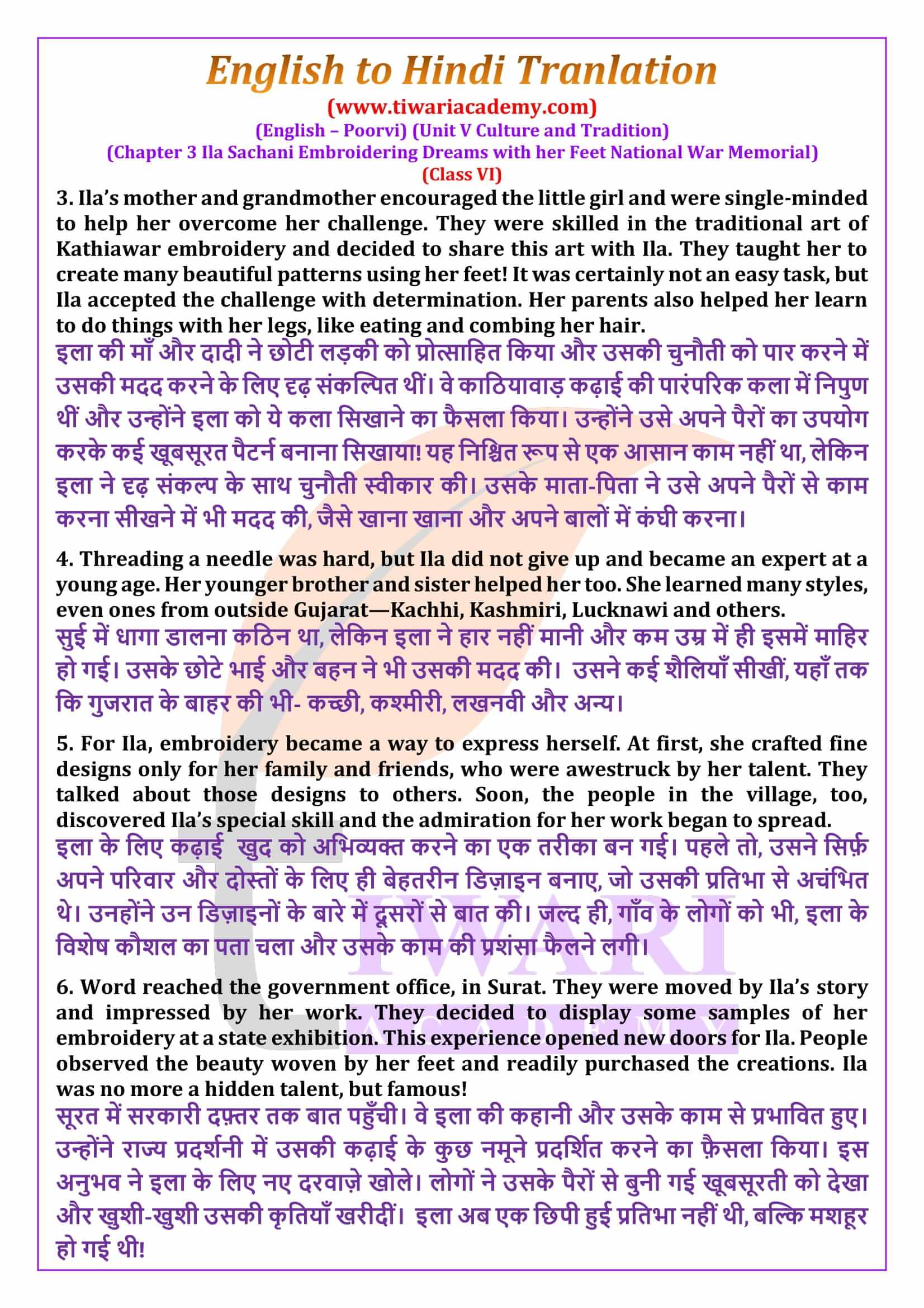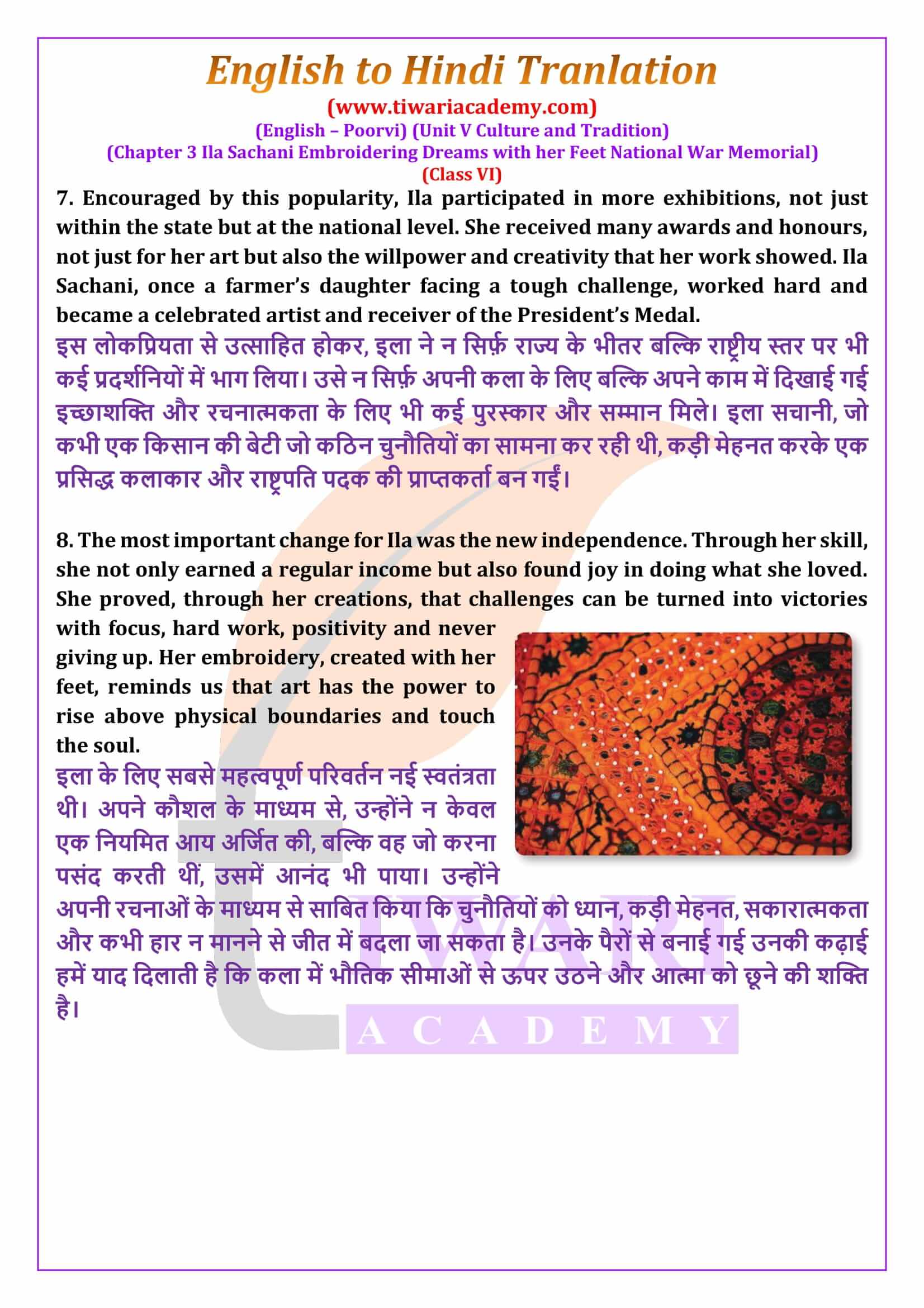NCERT Solutions for Class 6 English Poorvi Unit 5 Culture and Tradition Chapter 1 Hamara Bharat—Incredible India!, Chapter 2 The Kites and Chapter 3 Ila Sachani: Embroidering Dreams with her Feet for session 2025-26. English to Hindi Translation and answers are simplified in such a way that students can understand it easily.
Class 6 English Poorvi Unit 5 Culture and Tradition
- Chapter 1 Hamara Bharat-Incredible India!
- Chapter 2 The Kites
- Chapter 3 Ila Sachani: Embroidering Dreams with her Feet
- English to Hindi Translation Chapter 1
- English to Hindi Translation Chapter 2
- English to Hindi Translation Chapter 3
- Class 6 English NCERT Books
- Class 6 English NCERT Solutions
- Class 6 all Subjects Solutions
Class 6 English Unit V Chapter 1 Hamara Bharat — Incredible India!
“So, are you ready to meet your friends from all over the country?” the teacher asked the students sitting in the big hall. “Yes!” was the loud answer from the class.
“Can someone tell me for which programme are we here?” the teacher asked.
“Ek Bharat, Shreshtha Bharat”, the students answered together again.
“Please raise your hand to tell me what it is all about,” the teacher said.
Many hands went up and some were jumping to answer. The teacher asked Renu. With a smile on her face, she said, “It is to know that we all belong to one nation and that is the bond we share. And our unity in diversity makes us the most wonderful country in the world.”
The teacher smiled at her as everyone clapped. Just then, Bala pointed out, “Look! The video has started!” The big screen now had little windows each with a smiling child. Each child had something to share.
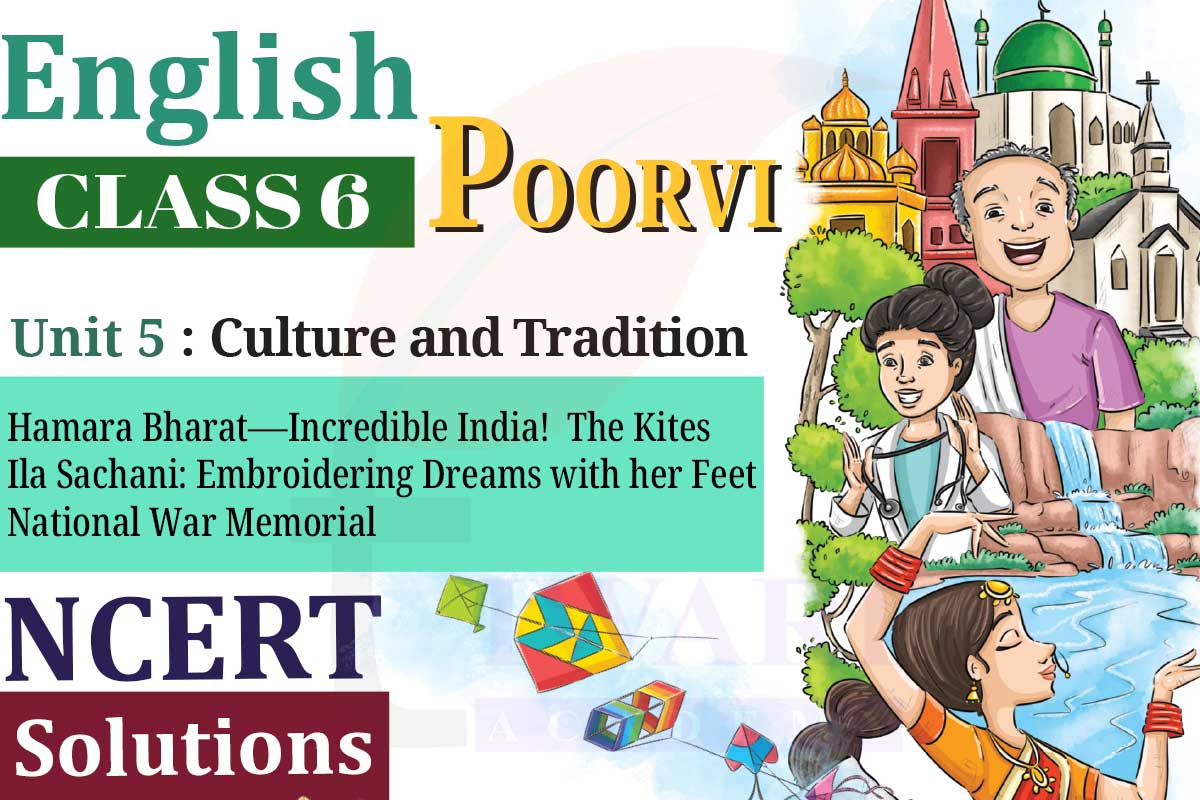
Pranam! I am Aakansha from Uttarakhand. I am going to tell you about Aipan, our folk art, that we draw on family functions and festivals. It is done with white rice flour paste on brick-red walls coloured with geru. It is made on floors and walls of puja rooms, and outside the main door of the home. It is an art form made by the women in the family. The designs are very beautiful and mathematical, and are based on our cultural traditions, and observations of nature.
Suprabhat! I am Priyaranjan from Odisha. My tribe practises a 4000-year-old metal craft
named Dhokra. To begin, we make a figure with clay, dry it, and cover it with a layer of wax. Then, we carve the fine details on the wax. After that, we cover the figure with clay, and put it in the fire. The wax melts and comes out of small openings. Next, brass scrap is melted and poured into the empty space. The liquid metal takes the same shape as the wax. Finally, we remove the outer layer of clay and finish the metal figure as we want.
Suprabhaatam! I am Chitra from Kerala. I want to tell you about coconut shell craft. First, we clean the outside and inside of a brown coconut shell. After that, we make it smooth by using sandpaper or a machine. Then we give it the shape we want, and make it stable by fixing a base under it. At last, we polish it using wood polish to make it shine. We make household things like bowls and even jewellery from the coconut shells. It is a biodegradable craft.
Subhodayam! I am Balamurali from Andhra Pradesh. I want to tell you about the 400-year-old art of making toys in my village, Kondapalli. To make the toys, we take soft wood from the nearby hills. After that, we carve each part of the toy separately. Then, we use makku—a paste of tamarind seed powder and sawdust to join the pieces together. Next, we add details and finish the toys. Finally, we use oil and water-colours or vegetable dyes and enamel paints to colour them. These toys are based on folk stories, animals, birds, bullock carts, rural life, etc.
Class 6 English Unit V Chapter 1 Hamara Bharat – Summary
During a school event for the “Ek Bharat, Shreshtha Bharat” program, students excitedly gathered in a hall to connect with friends from across the country. The teacher asked about the program’s purpose, and Renu explained that it celebrates India’s unity in diversity. The students then watched a video featuring children from different states sharing their traditional arts:
Aakansha from Uttarakhand described Aipan, a folk art made with white rice flour paste on brick-red walls, used during family functions and festivals.
Priyaranjan from Odisha explained Dhokra, a 4000-year-old metal craft involving intricate clay and wax molding, followed by brass casting.
Chitra from Kerala showcased coconut shell craft, turning cleaned and polished shells into household items and jewelry.
Balamurali from Andhra Pradesh discussed Kondapalli toys, made from soft wood, joined with a tamarind seed paste, and painted with traditional colors, depicting folk stories and rural life.
The program highlighted the rich cultural heritage and craftsmanship of various Indian states, emphasizing the nation’s unity in diversity.
Class 6 English Unit V Chapter 2 The Kites – Poem
Up in the air
See the kites fly,
Like coloured birds
In the wind-whipped sky.
I wish I were small
And light as air,
I would climb on a kite
And sail up there.
Then I would drift upon
The paper wings,
And hear the songs
That the wild wind sings.
What fun it would be
To look right down,
Over the park
And the rooftops of town.
The people below
Would stand and stare,
And wish they were me
High, high in the air.
Class 6 English Unit V Chapter 2 The Kites – Summary
The poem describes the joy of watching kites soaring in the sky, comparing them to colorful birds. The speaker wishes to be small and light enough to ride a kite, imagining the thrill of drifting on paper wings and listening to the wind’s songs. They envision the fun of looking down at the park and town rooftops, with people below staring in awe and wishing to be up high in the air like the speaker.
Class 6 English Unit V Chapter 3 Ila Sachani: Embroidering Dreams with her Feet
When you enter a tiny room in Moti Vavdi village, Bhavnagar, Gujarat, you will see lots of bright colours. There are many lovely things like cushions, bedcovers, pillows, and more, with beautiful designs. Ila Sachani, a wonderful lady with a big smile, makes all these using a shiny needle to create these designs. She is very good at Kathiawar embroidery—a style that needs a lot of skill.
Ila Sachani’s journey began in the quiet settings of Amreli, Gujarat, where she was born into a farmer’s family. From the beginning, life presented its challenges, as Ila was born with her hands hanging loose by her sides. Unlike other children, she could not use her hands in the usual way. While other small hands drew figures in the sand or plucked wild flowers, she wondered why she could not join them. She too wanted to hold a chalk in her hands and draw figures on a slate.
Ila’s mother and grandmother encouraged the little girl and were single-minded to help her overcome her challenge. They were skilled in the traditional art of Kathiawar embroidery and decided to share this art with Ila. They taught her to create many beautiful patterns using her feet! It was certainly not an easy task, but Ila accepted
the challenge with determination. Her parents also helped her learn to do things with her legs, like eating and combing her hair.
Threading a needle was hard, but Ila did not give up and became an expert at a young age. Her younger brother and sister helped her too. She learned many styles, even ones from outside Gujarat—Kachhi, Kashmiri, Lucknawi and others.
For Ila, embroidery became a way to express herself. At first, she crafted fine designs
only for her family and friends, who were awestruck by her talent. They talked about those designs to others. Soon, the people in the village, too, discovered Ila’s special skill and the admiration for her work began to spread.
Word reached the government office, in Surat. They were moved by Ila’s story and impressed by her work. They decided to display some samples of her embroidery at a state exhibition. This experience opened new doors for Ila. People observed the beauty woven by her feet and readily purchased the creations. Ila was no more a hidden talent, but famous!
Encouraged by this popularity, Ila participated in more exhibitions, not just within the state but at the national level. She received many awards and honours, not just for her art but also the willpower and creativity that her work showed. Ila Sachani, once a farmer’s daughter facing a tough challenge, worked hard and became a celebrated artist and receiver of the President’s Medal.
The most important change for Ila was the new independence. Through her skill, she not only earned a regular income but also found joy in doing what she loved. She proved, through her creations, that challenges can be turned into victories with focus, hard work, positivity and never giving up.
Her embroidery, created with her feet, reminds us that art has the power to rise above physical boundaries and touch the soul.
Class 6 English Unit V Chapter 3 Ila Sachani – Summary
Ila Sachani, from Moti Vavdi village in Bhavnagar, Gujarat, is a talented Kathiawar embroidery artist who overcame physical challenges to become a celebrated creator. Born with limited use of her hands, Ila learned to embroider using her feet, thanks to the support of her mother and grandmother. Her determination and skill led her to master various embroidery styles and gain local admiration. Her work caught the attention of the government, leading to state and national exhibitions where she received acclaim and awards, including the President’s Medal. Ila’s journey from a farmer’s daughter to a renowned artist highlights the power of perseverance, hard work, and the transformative nature of art.
